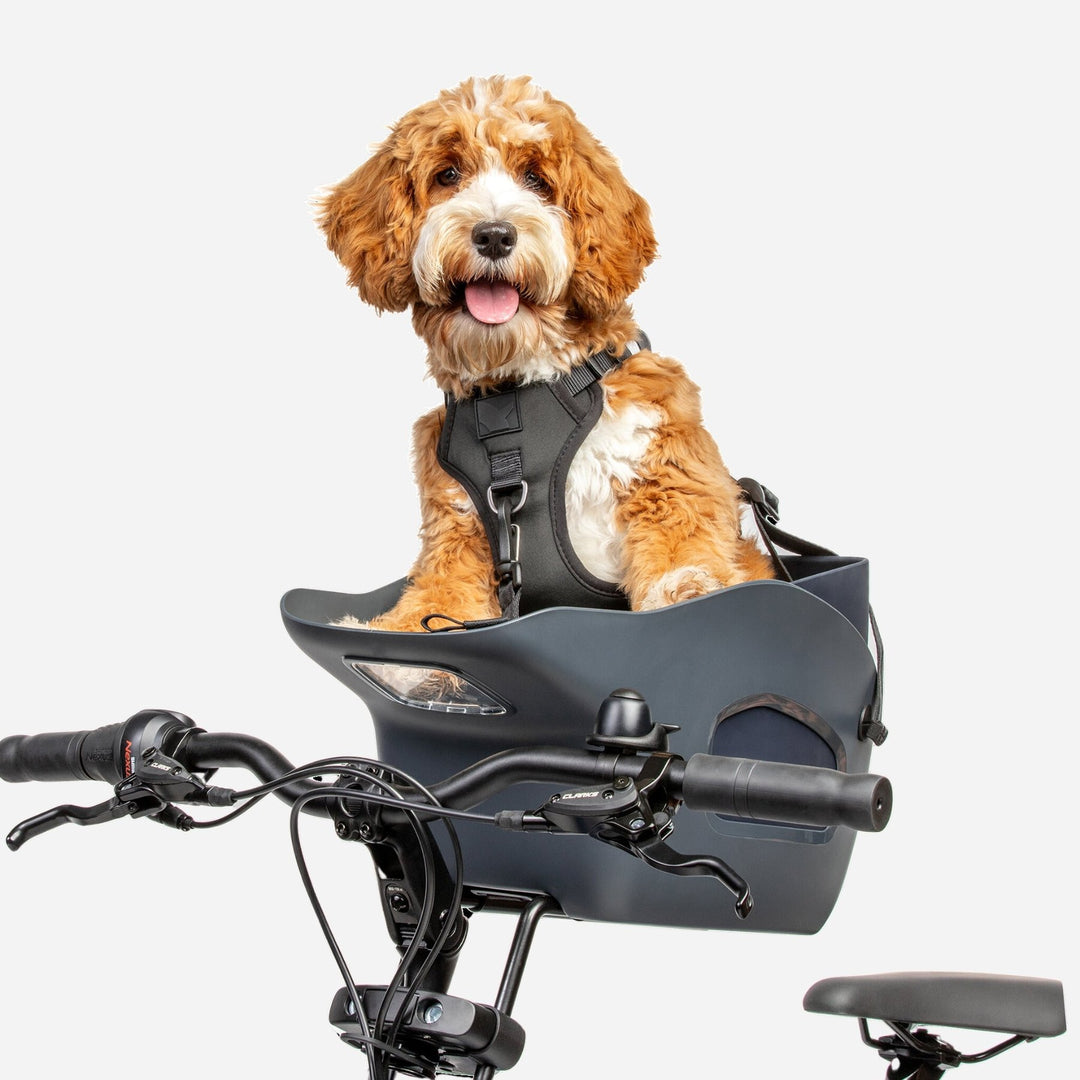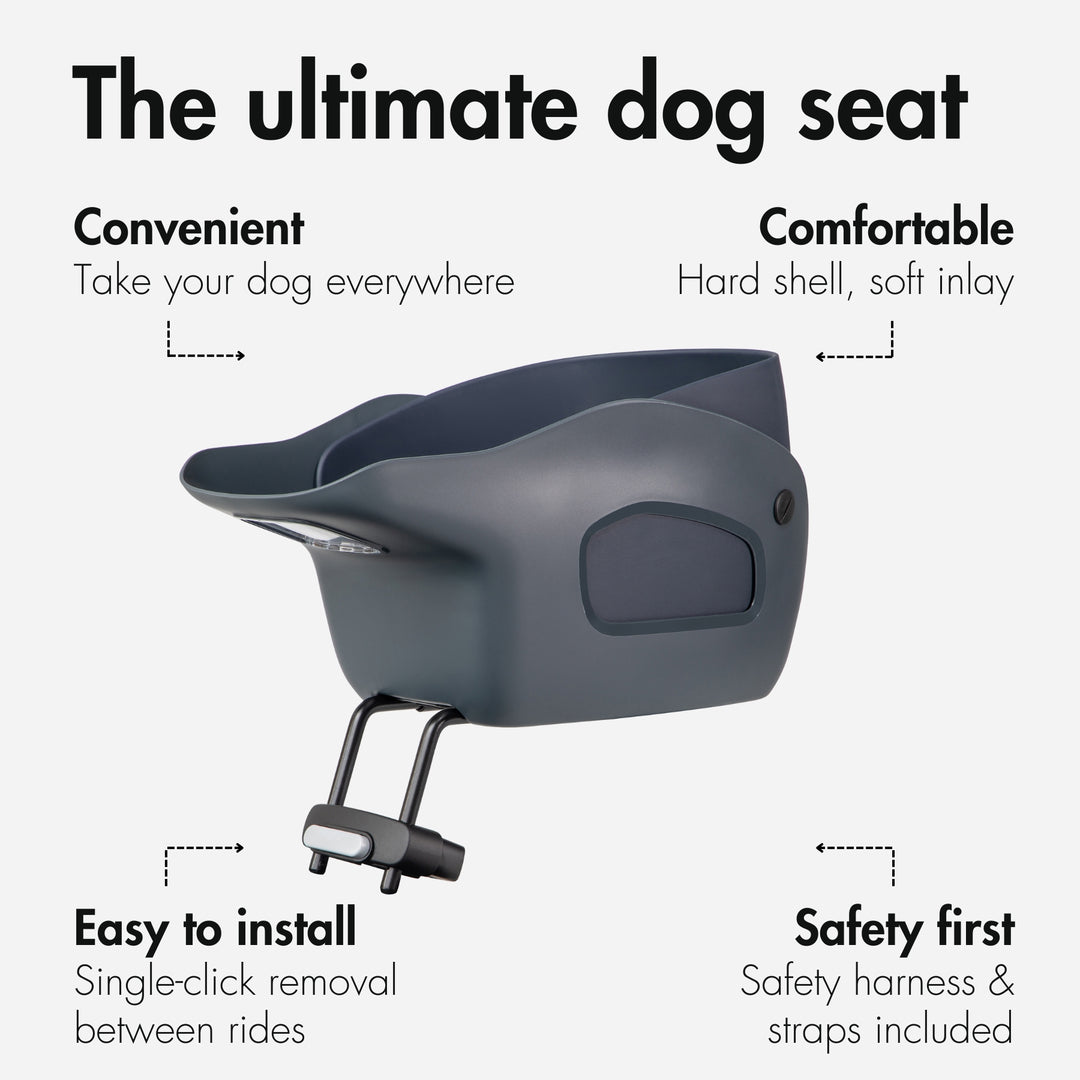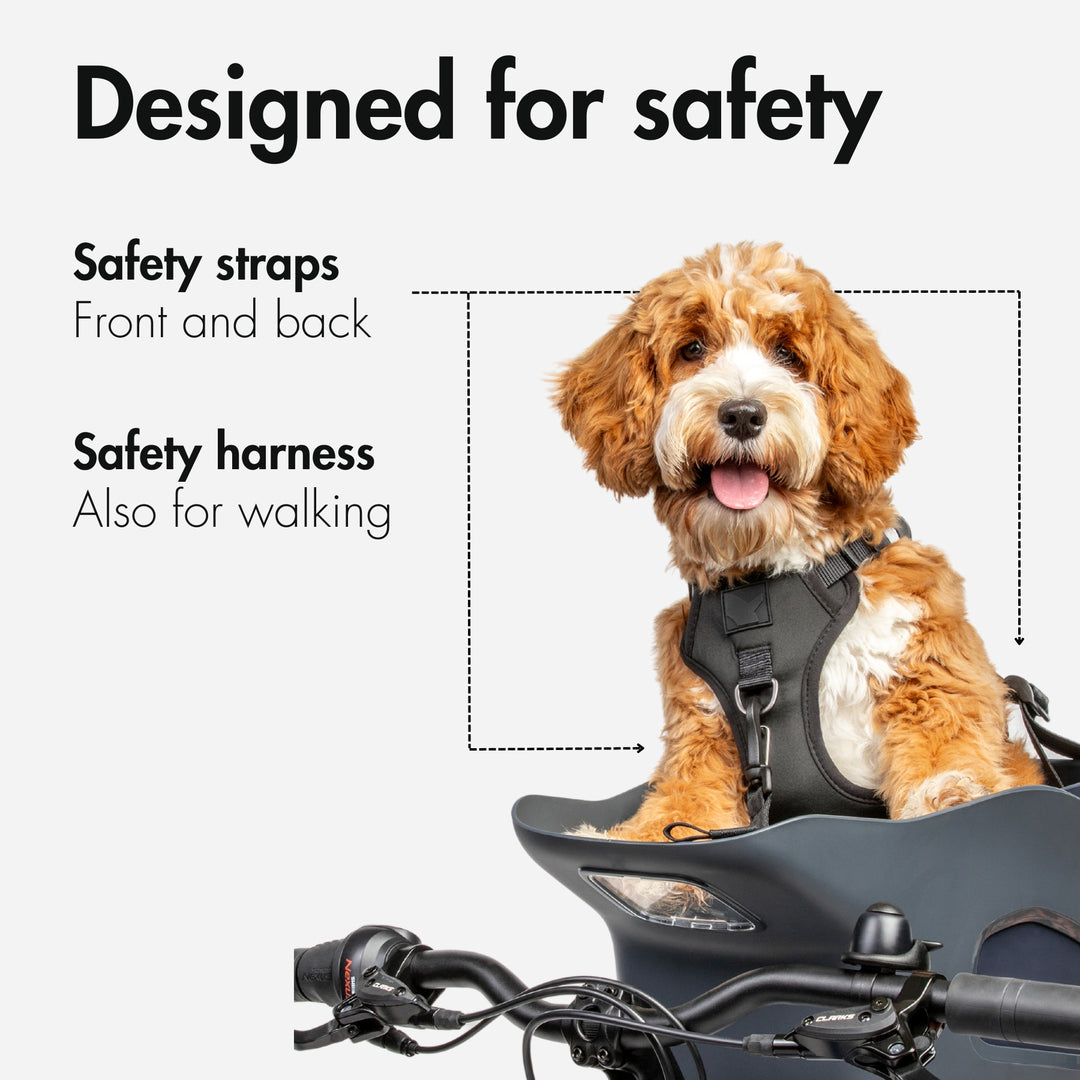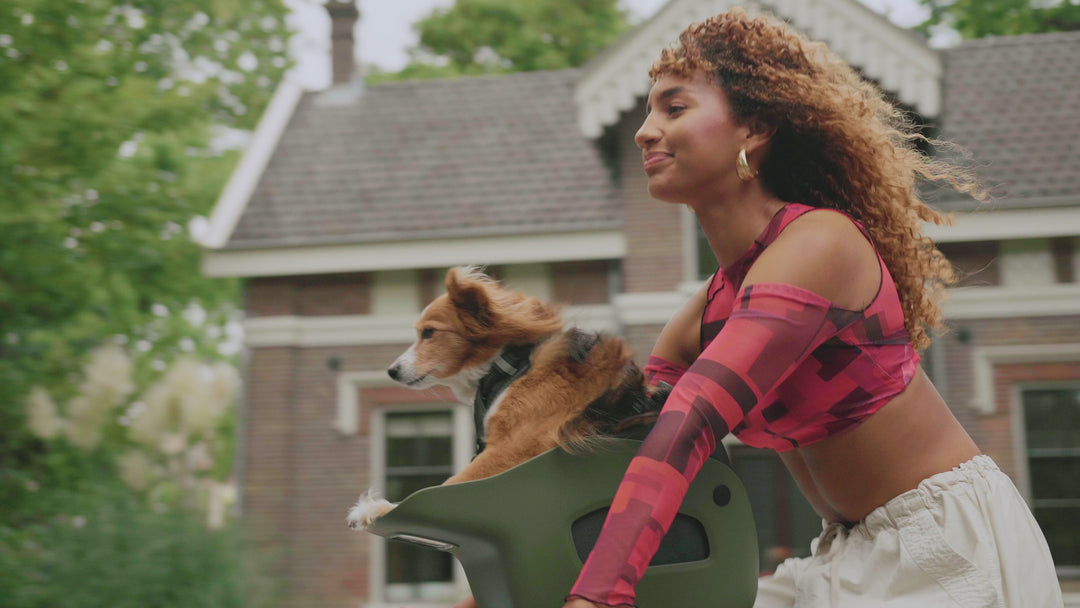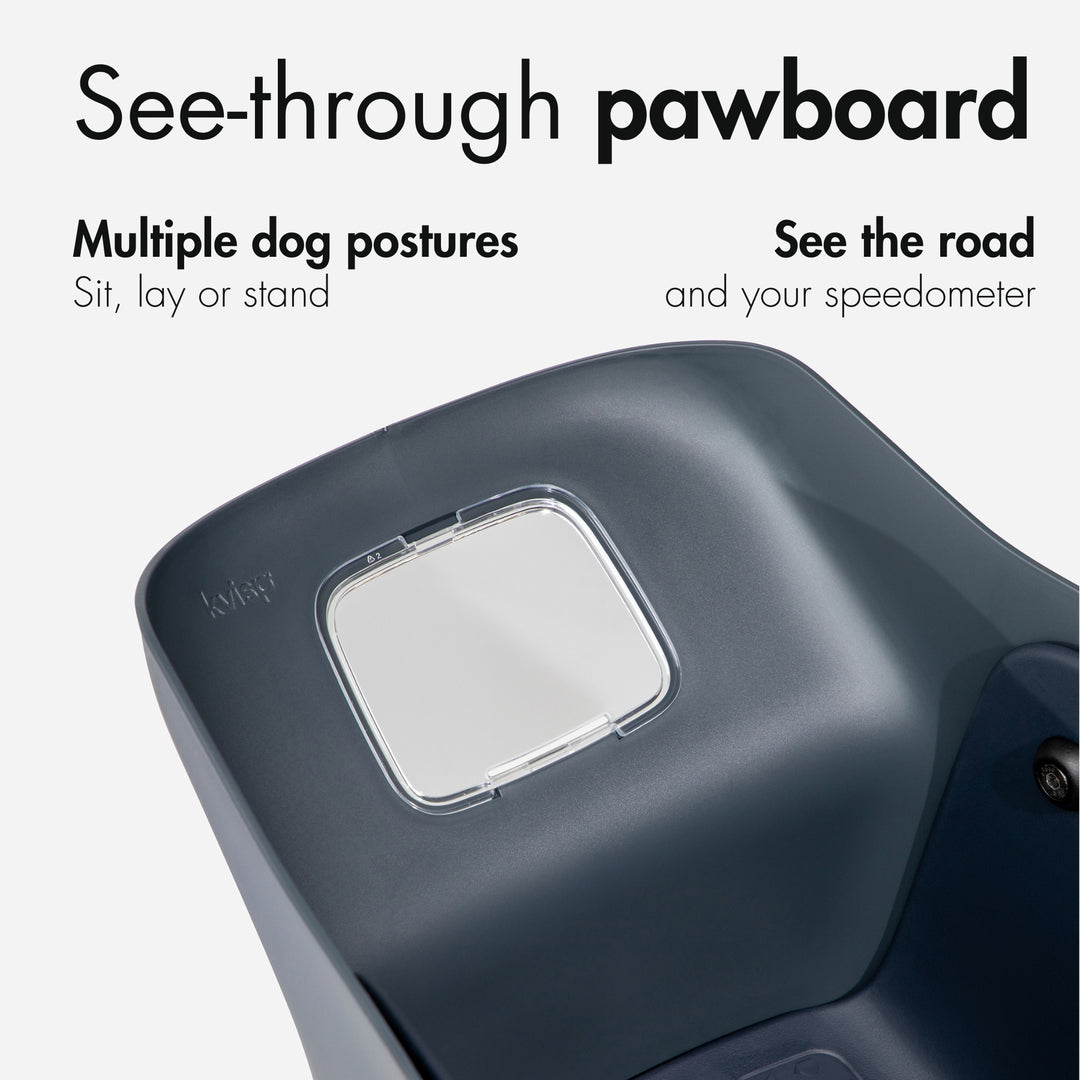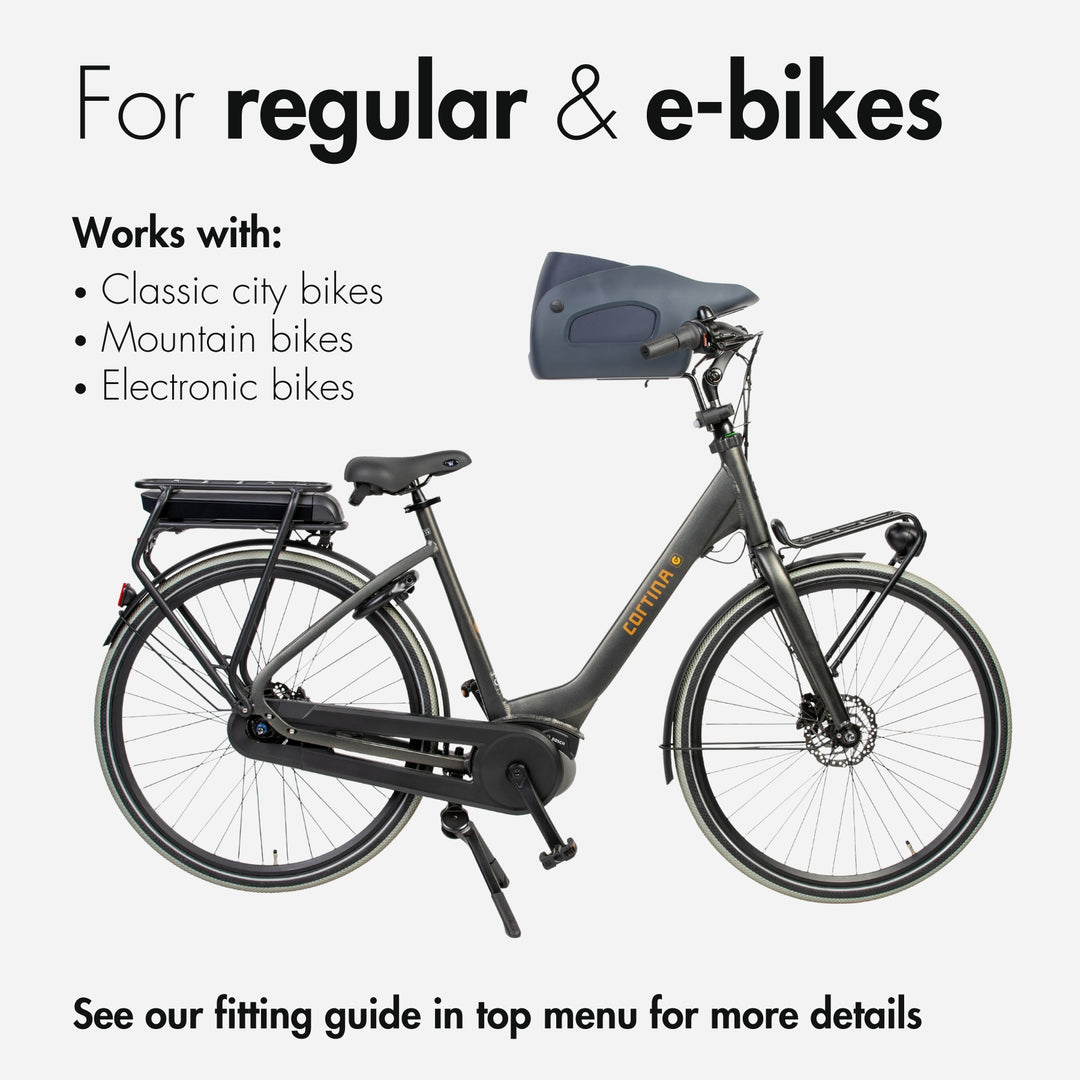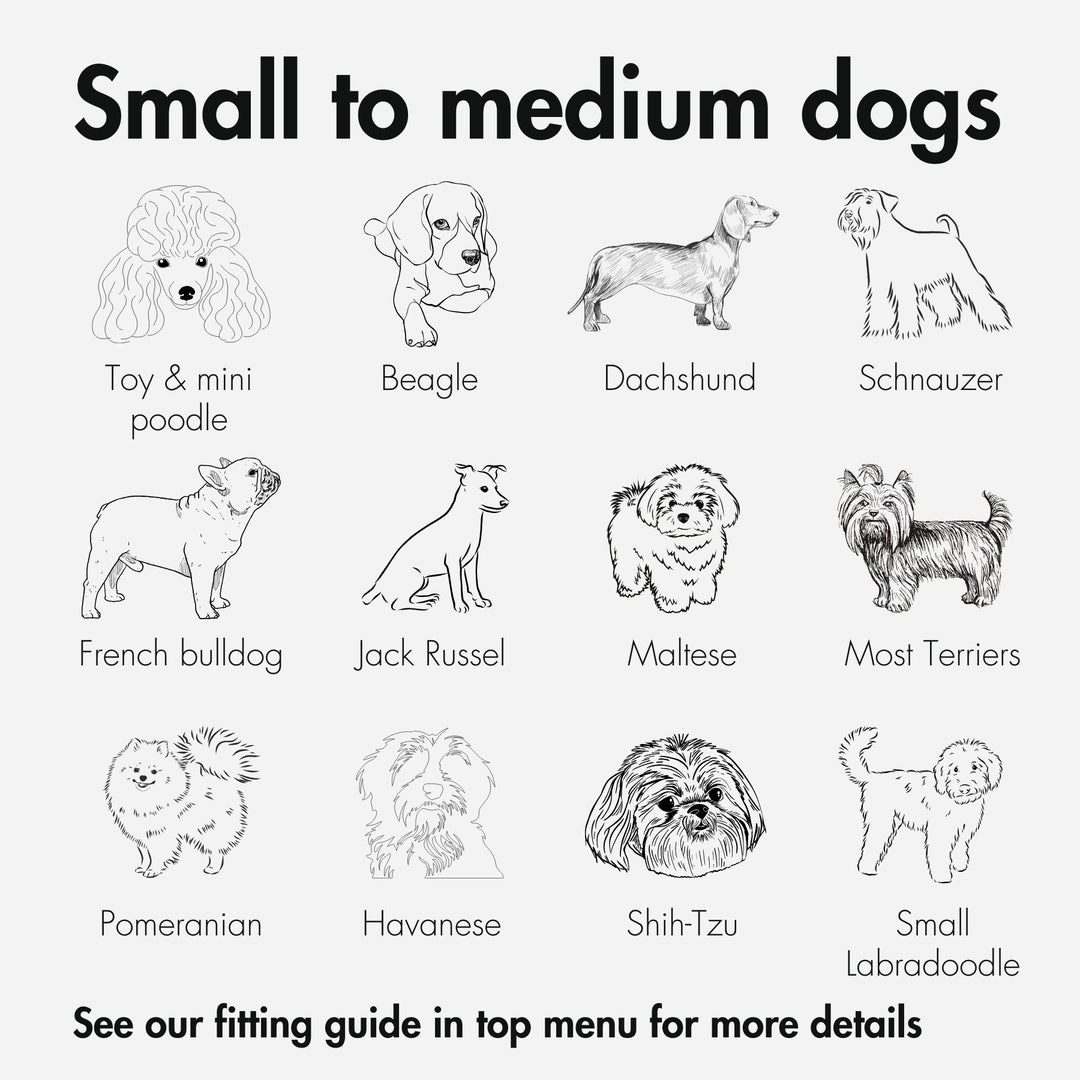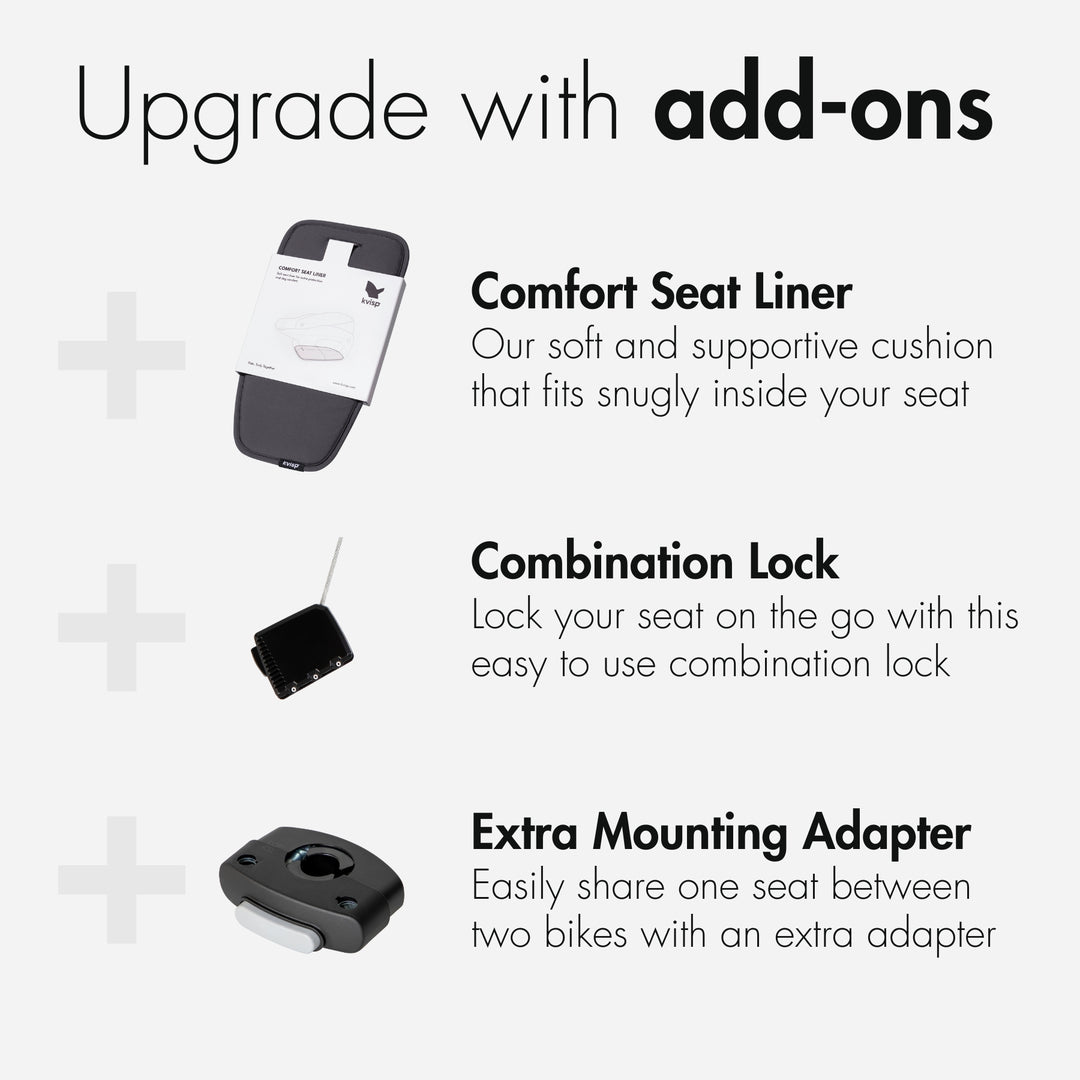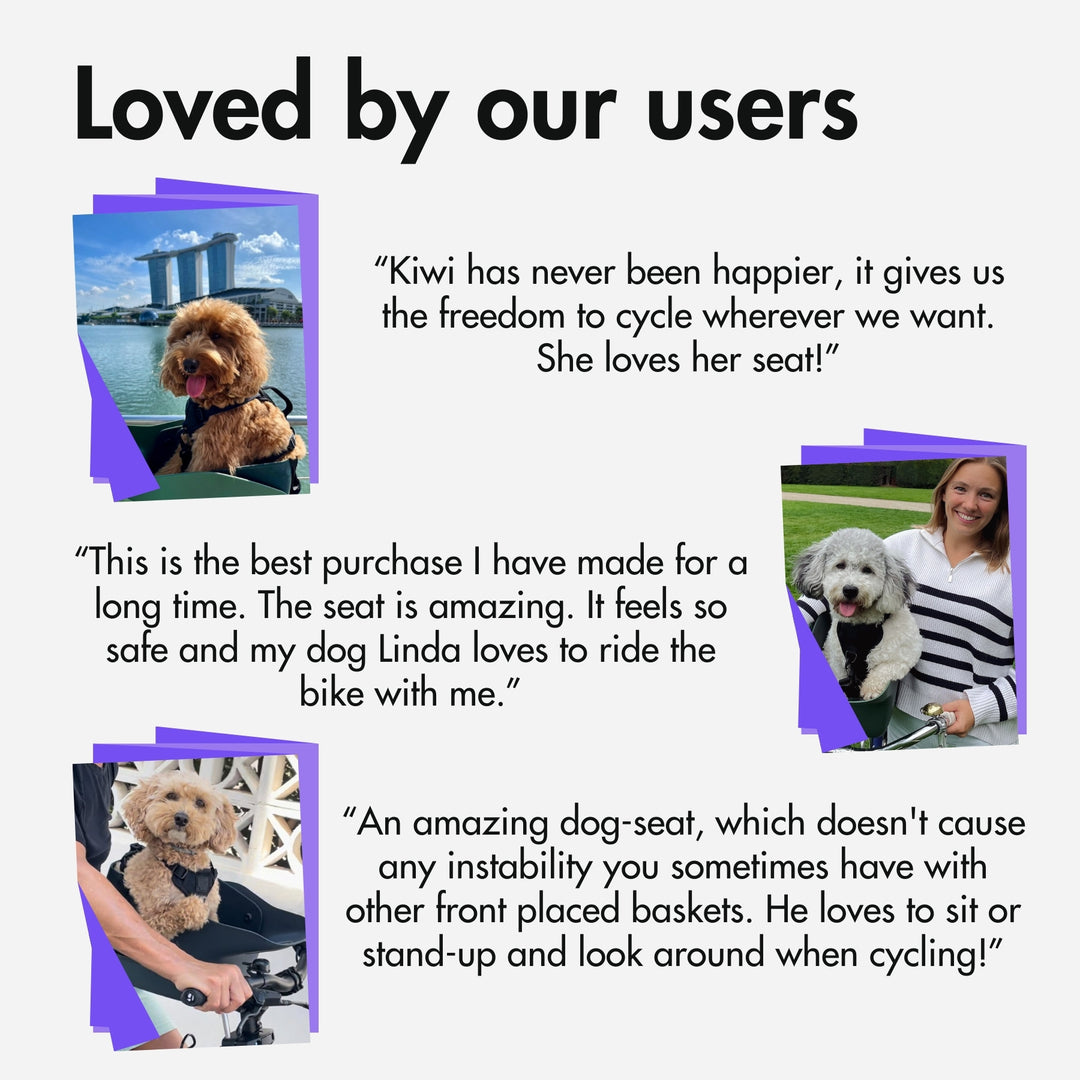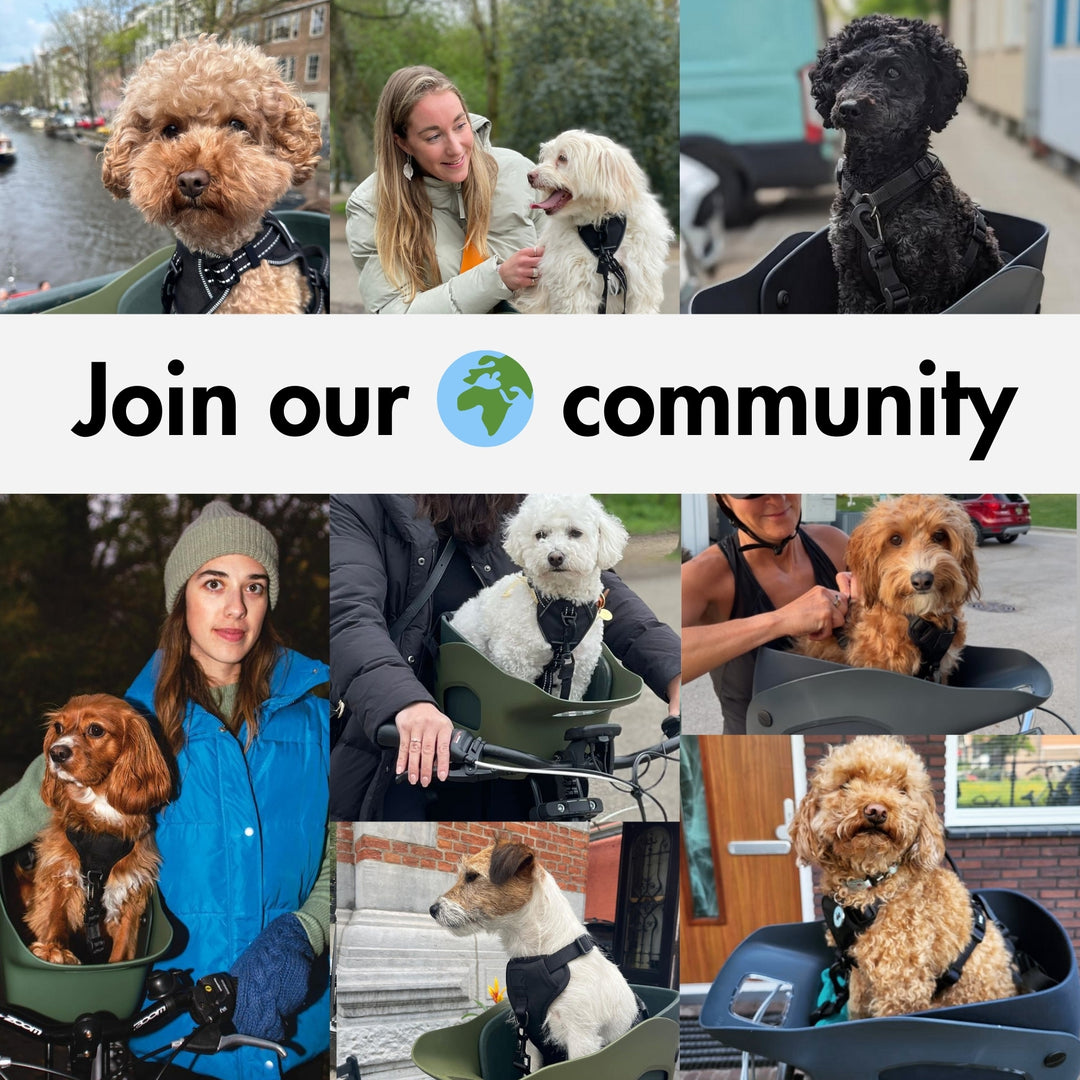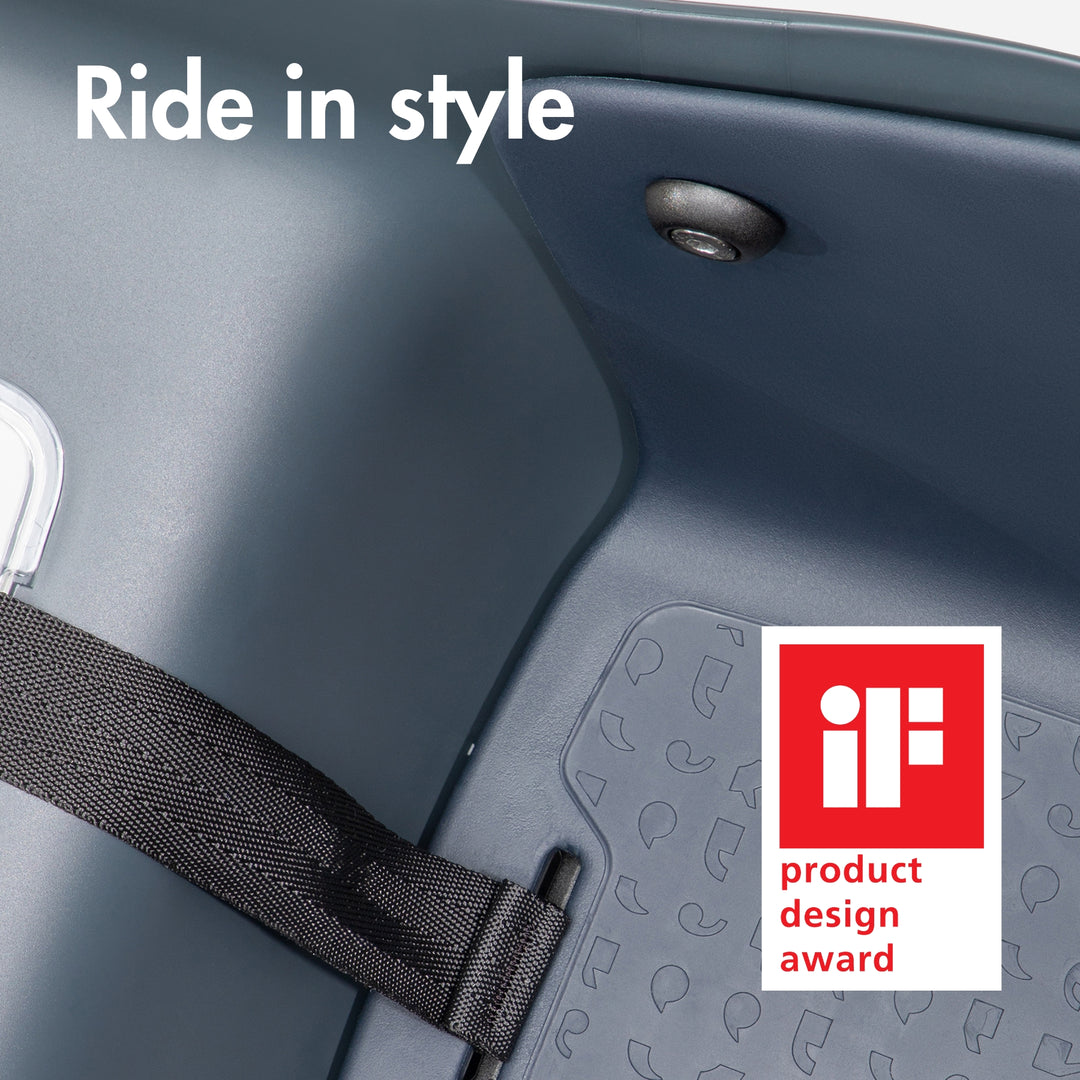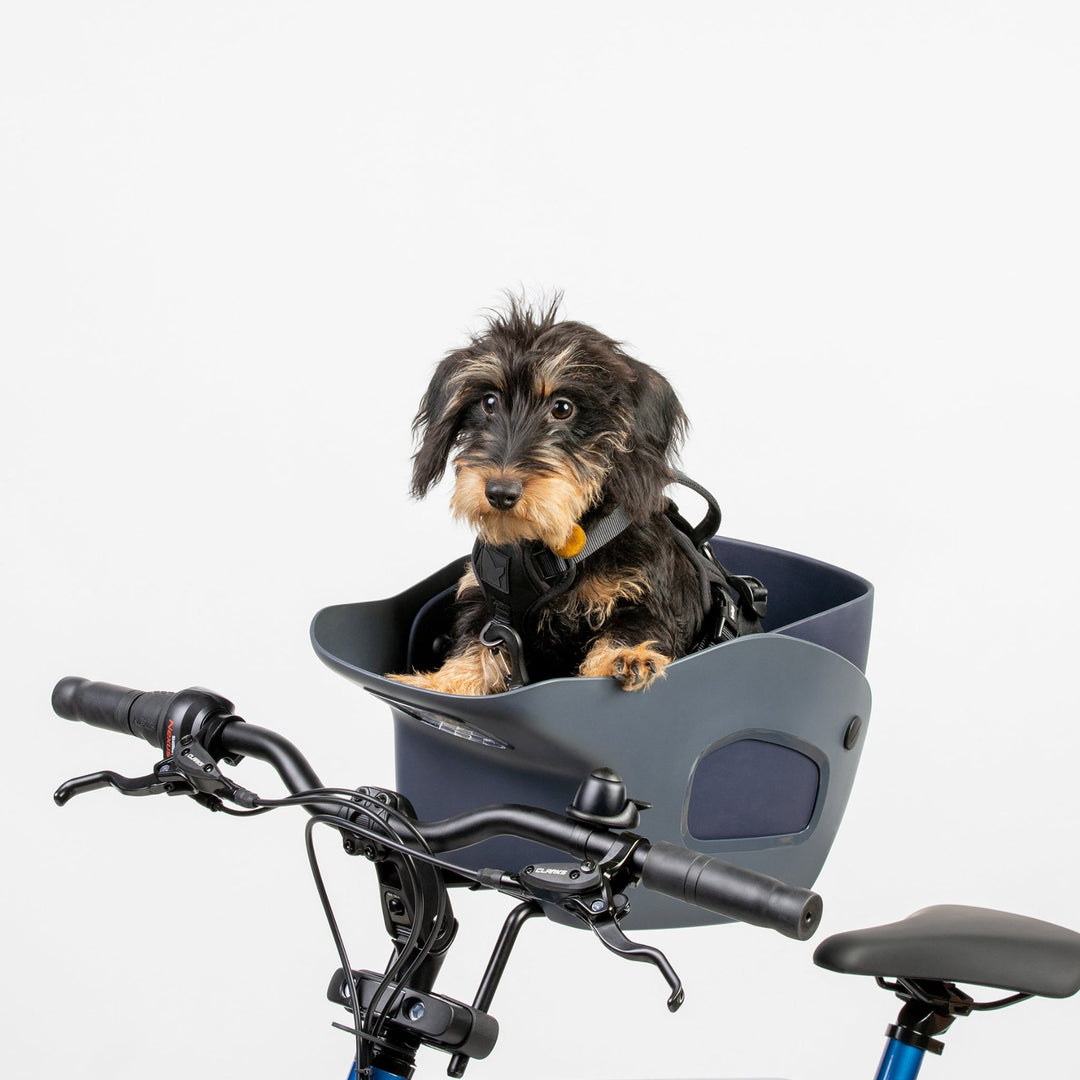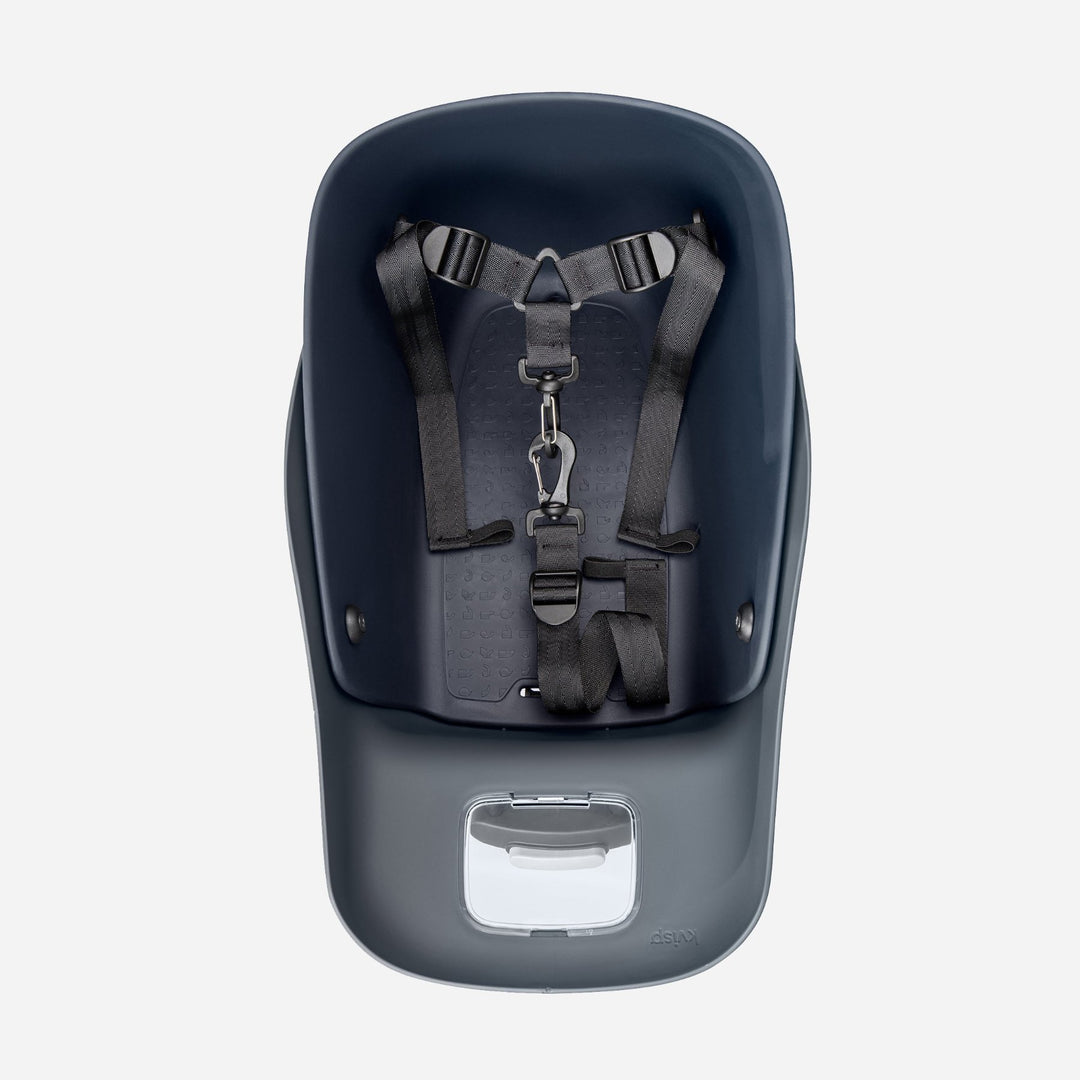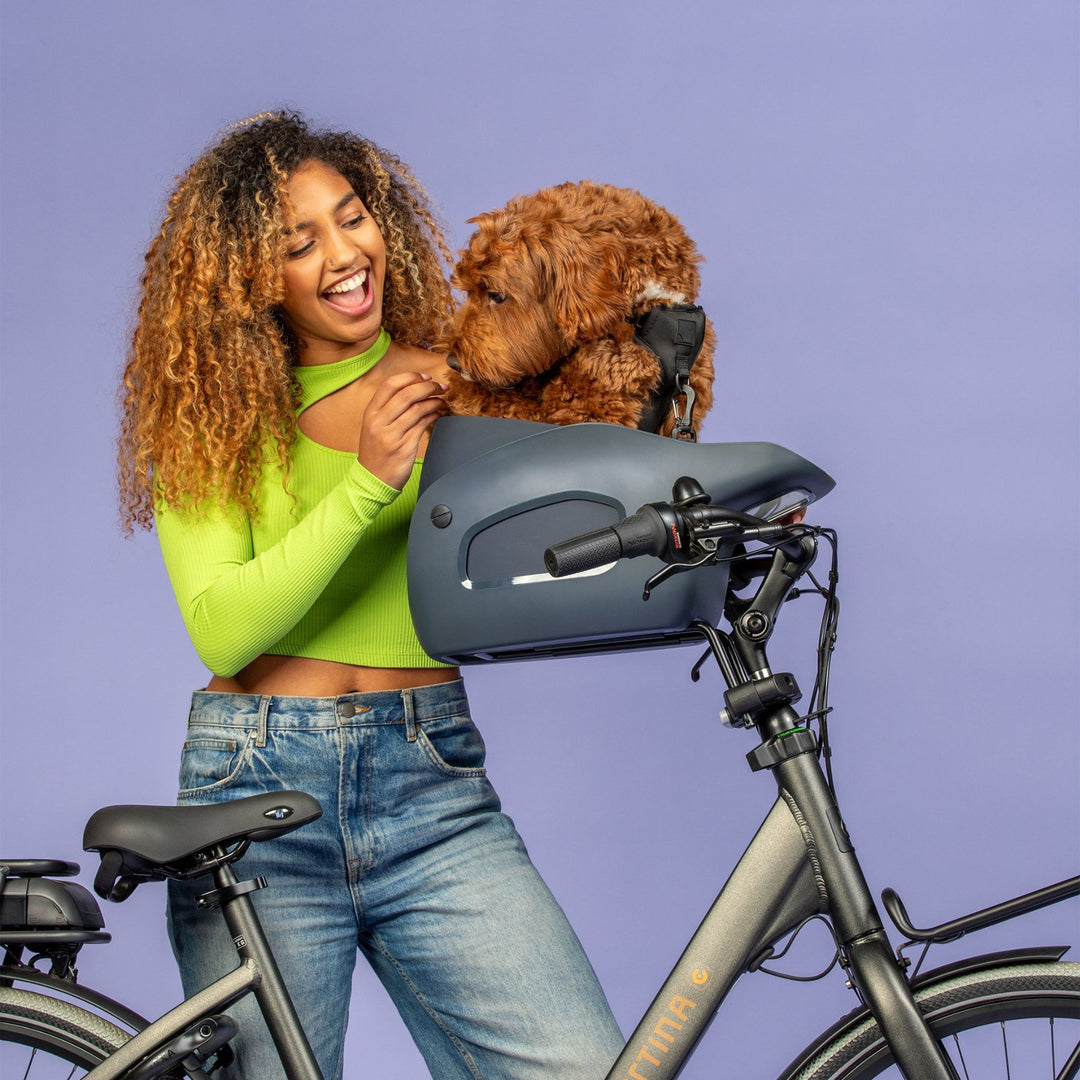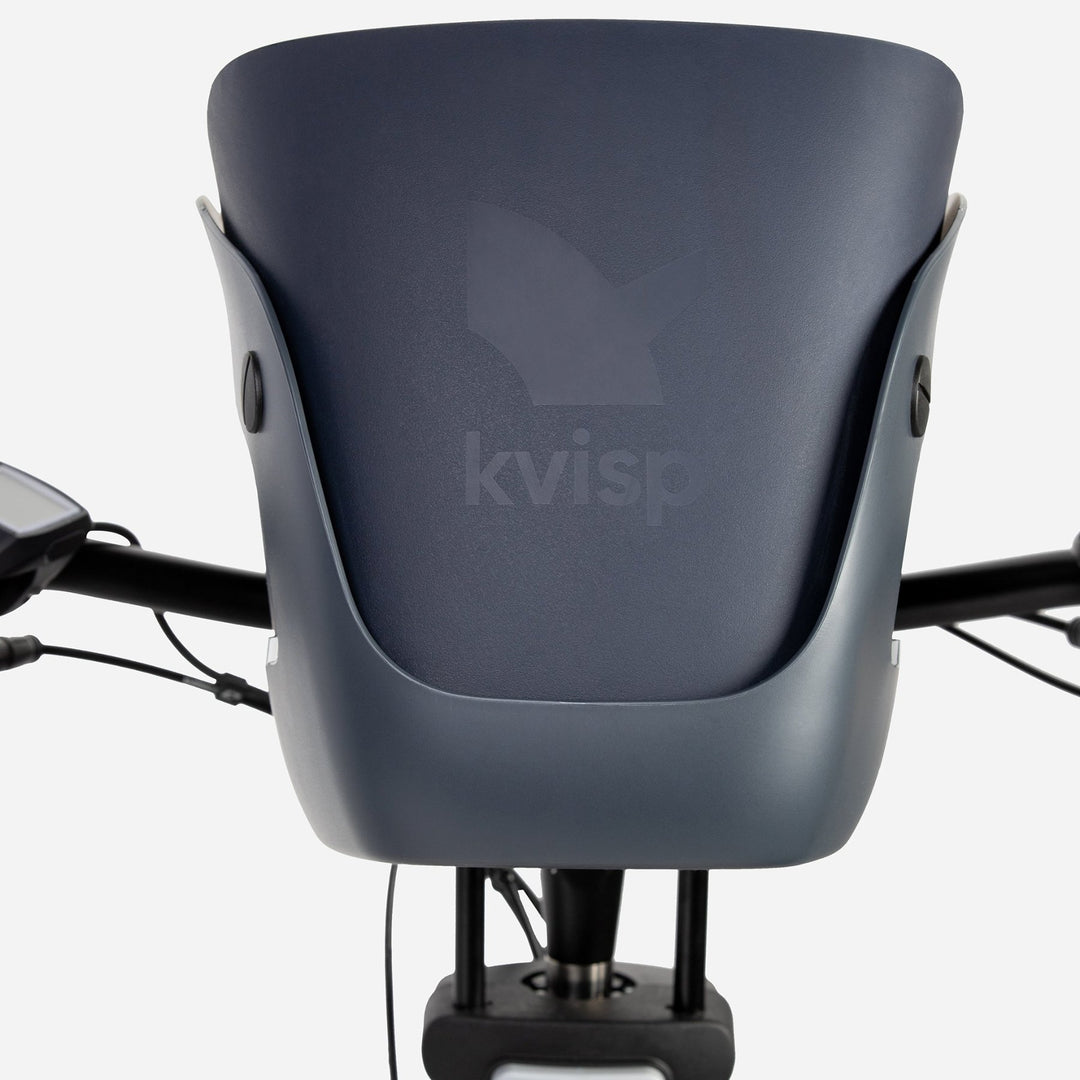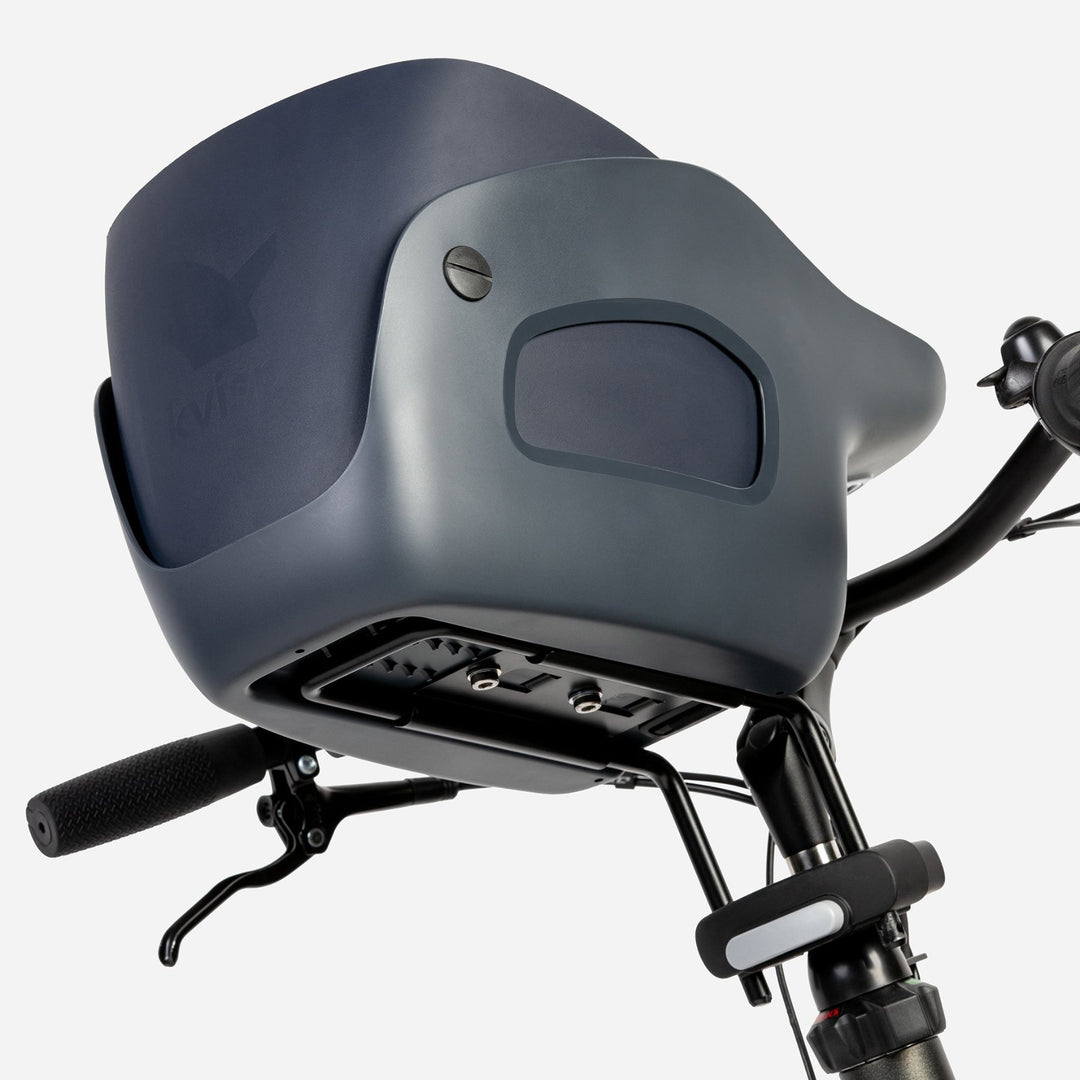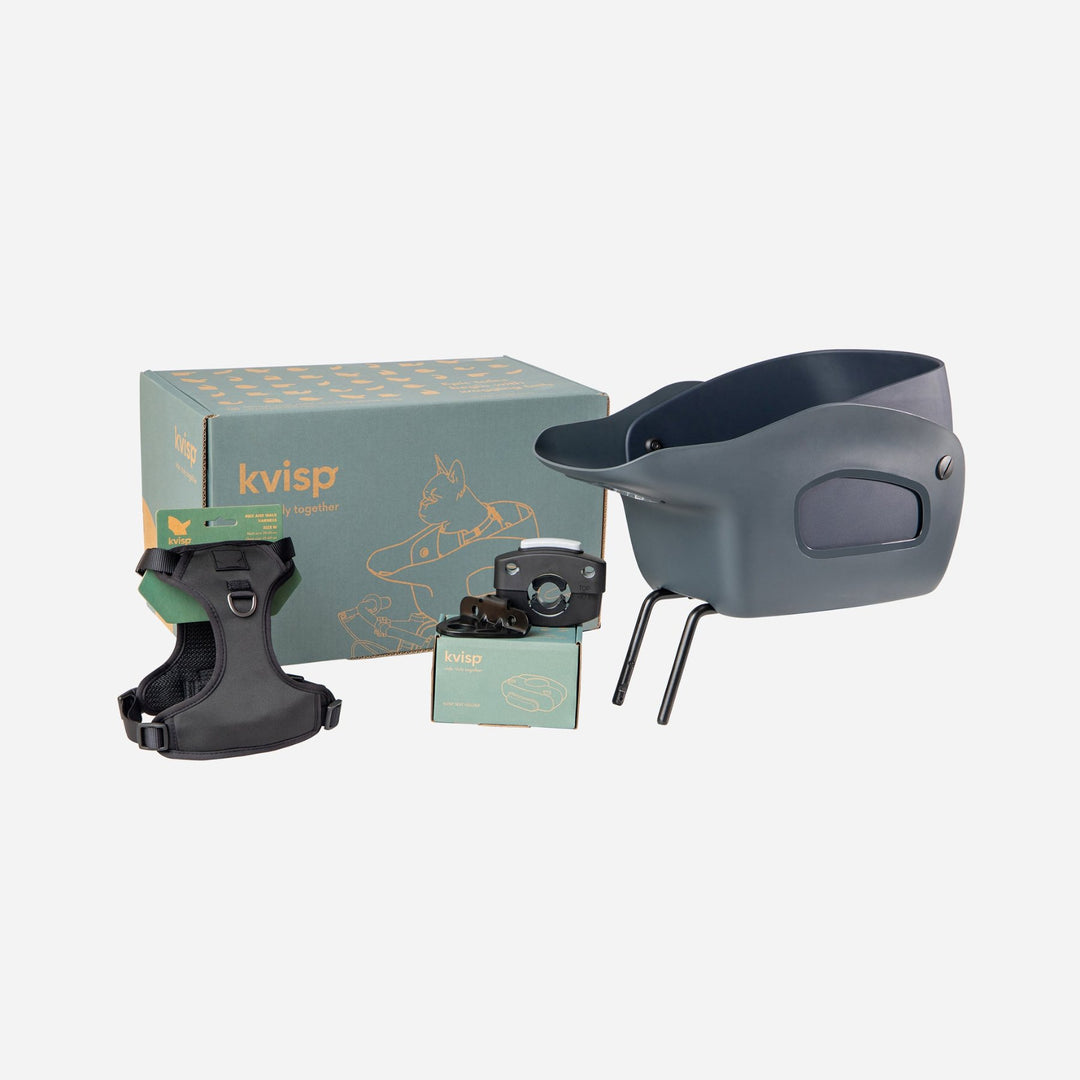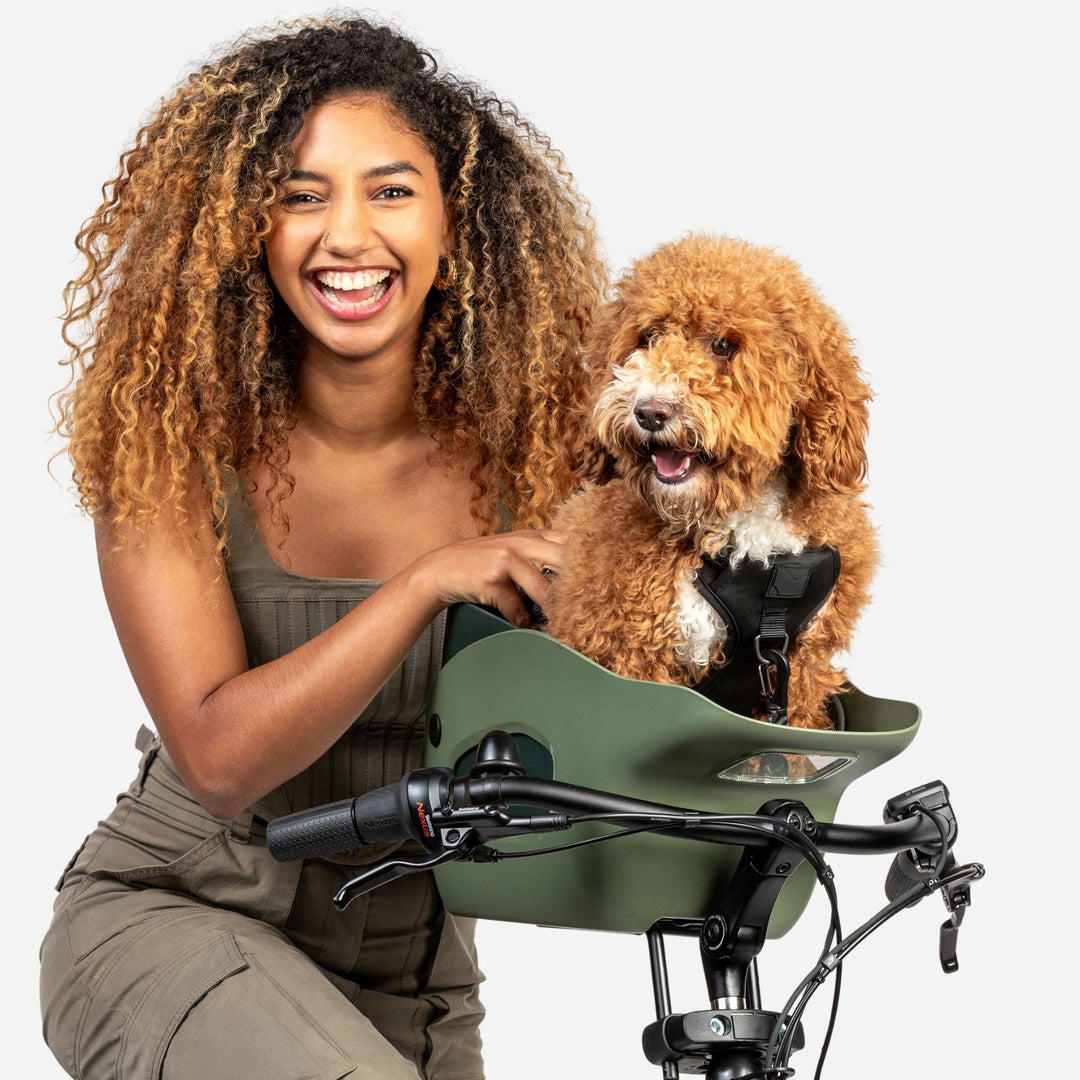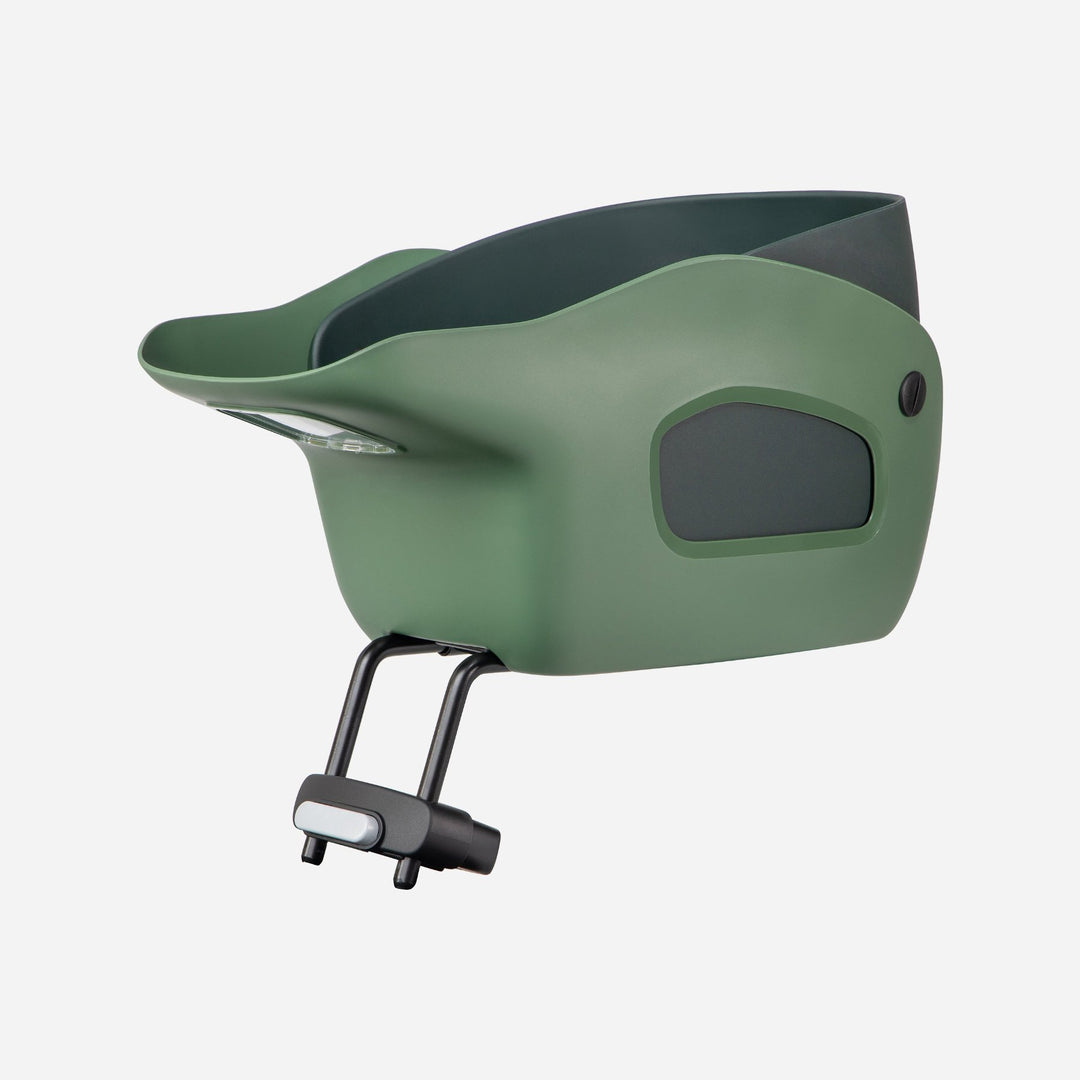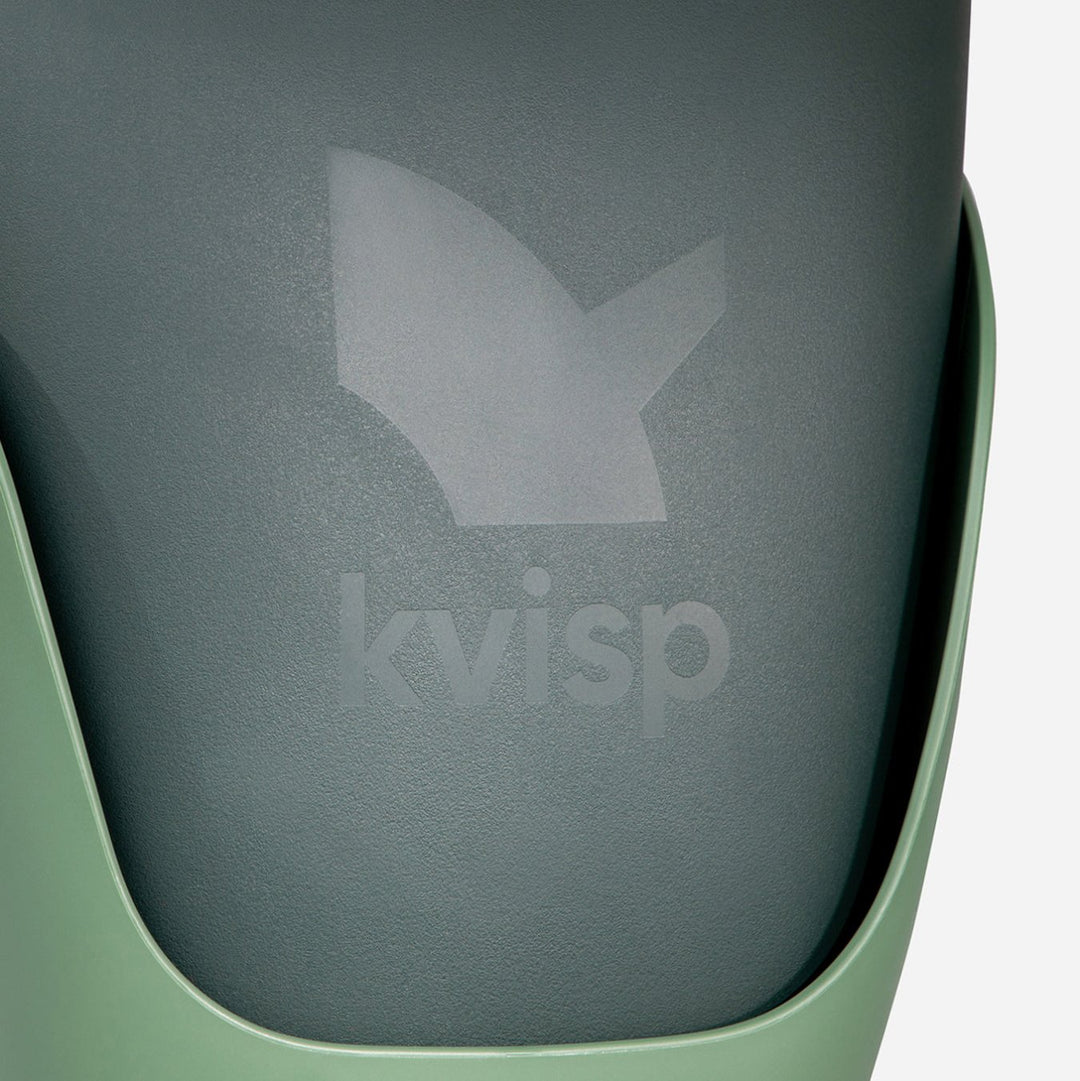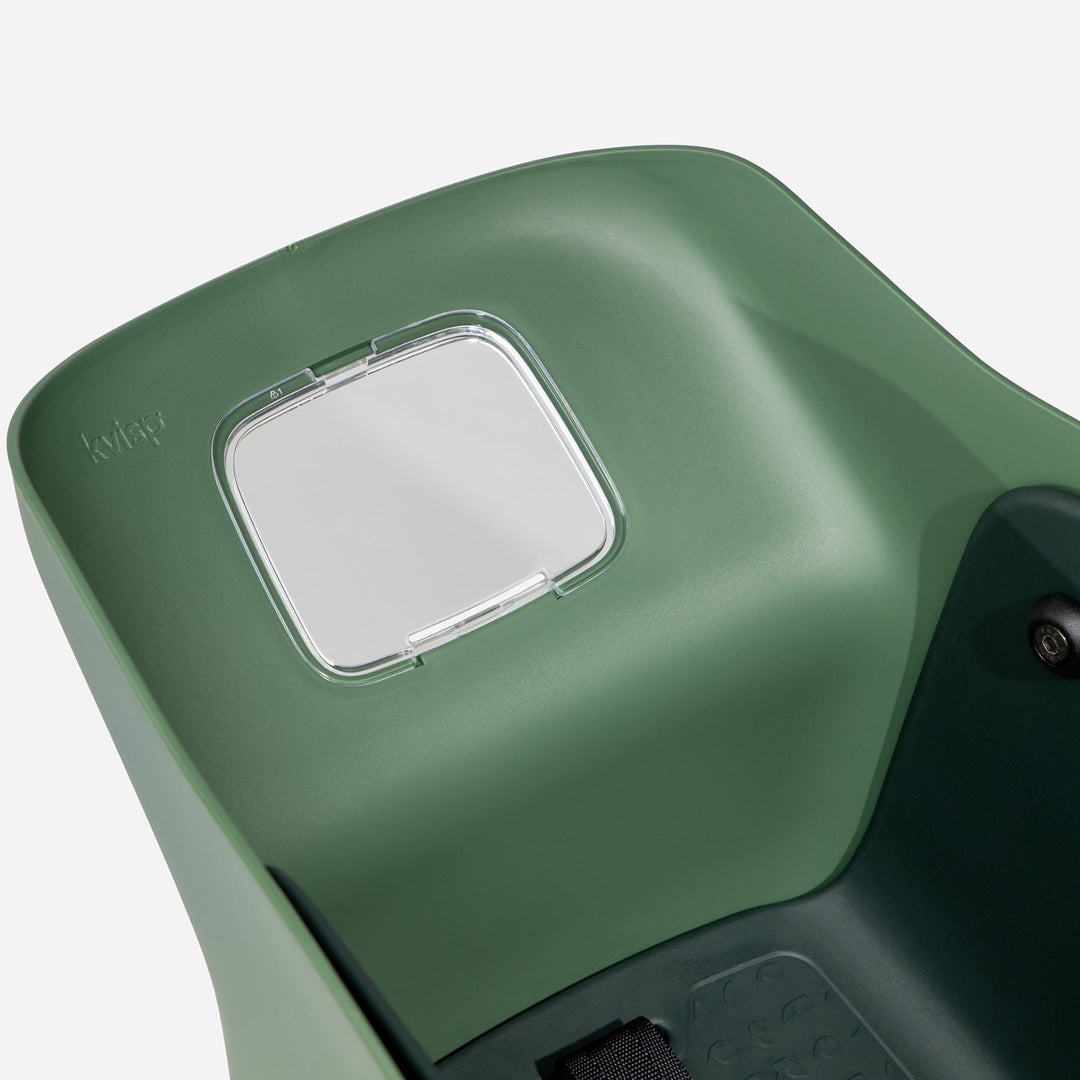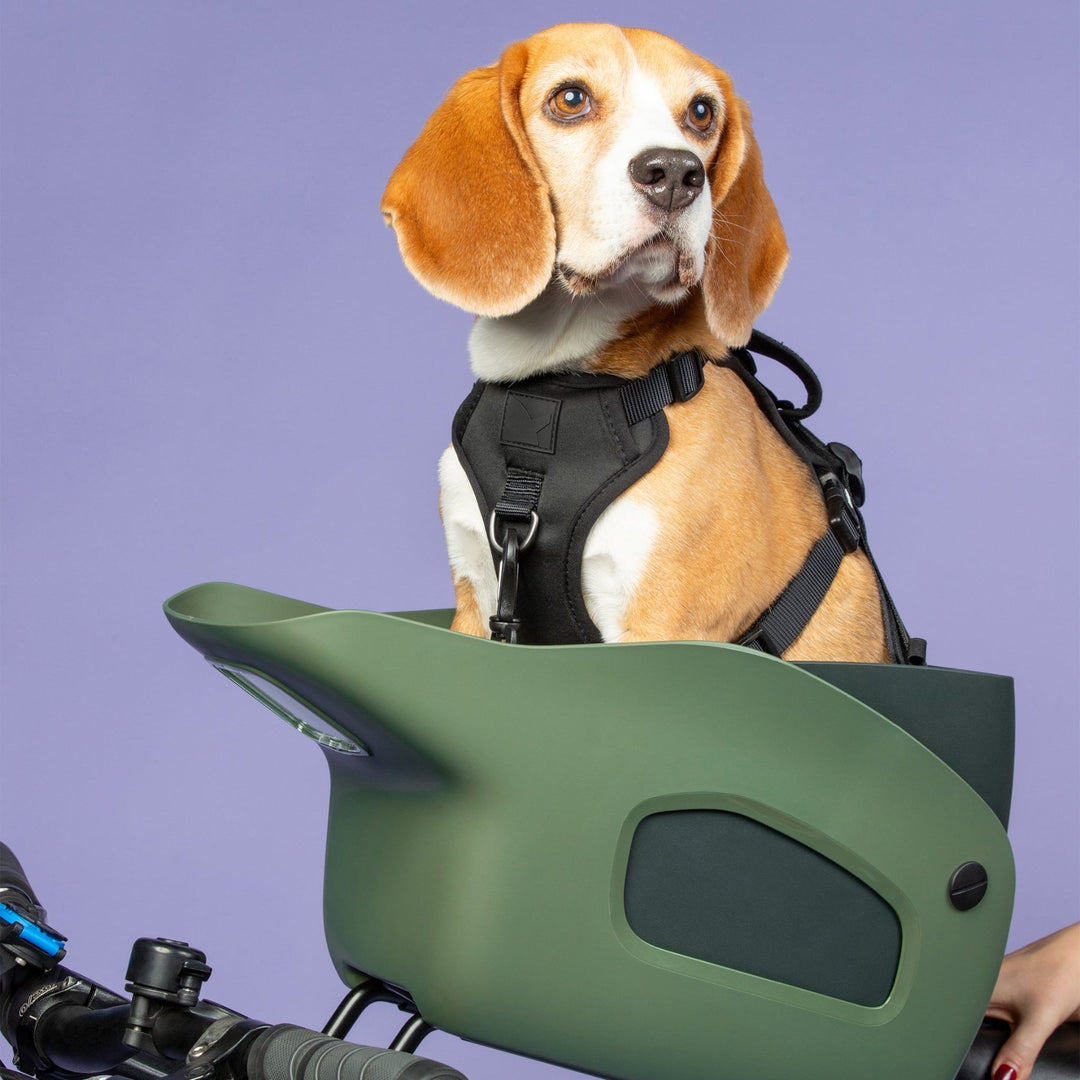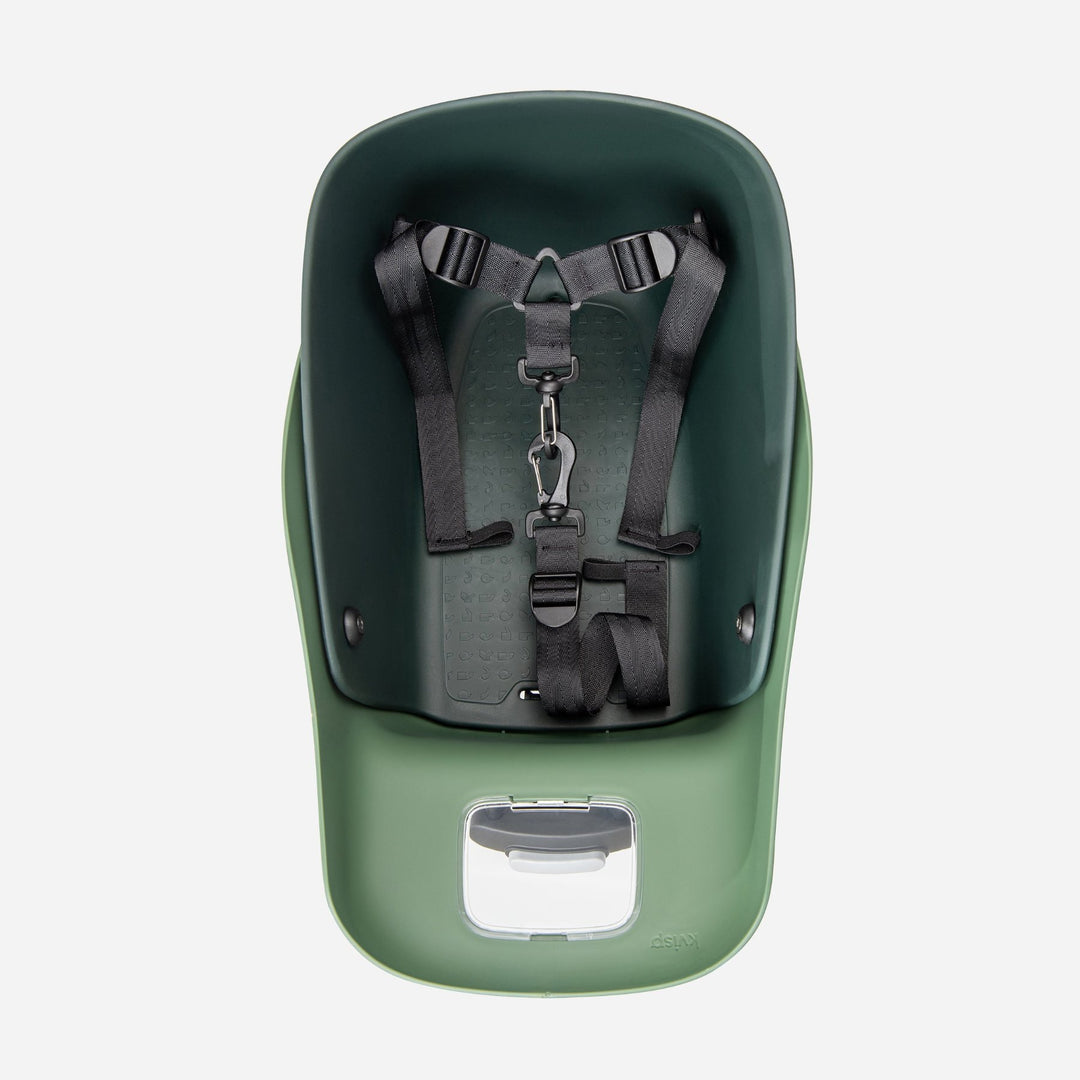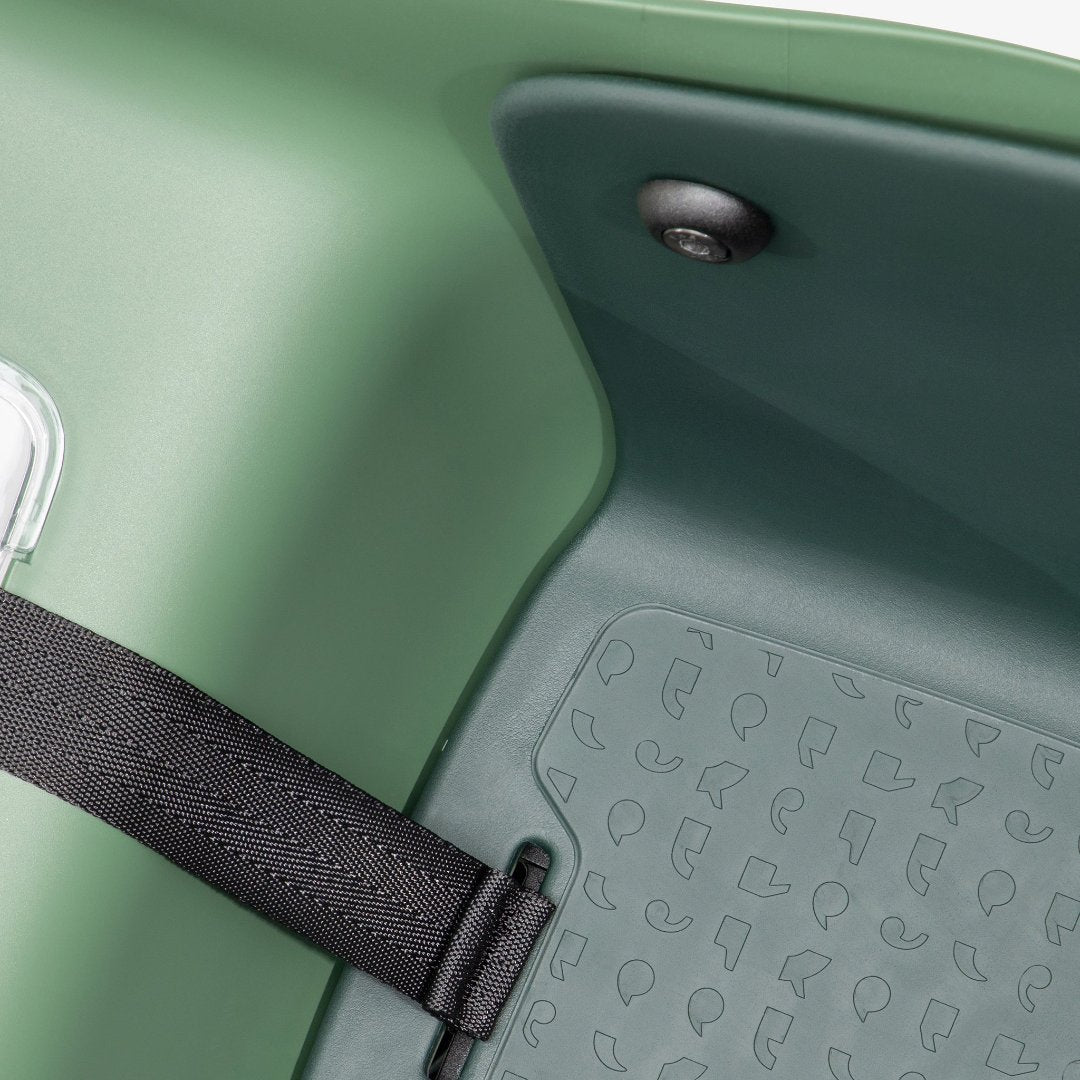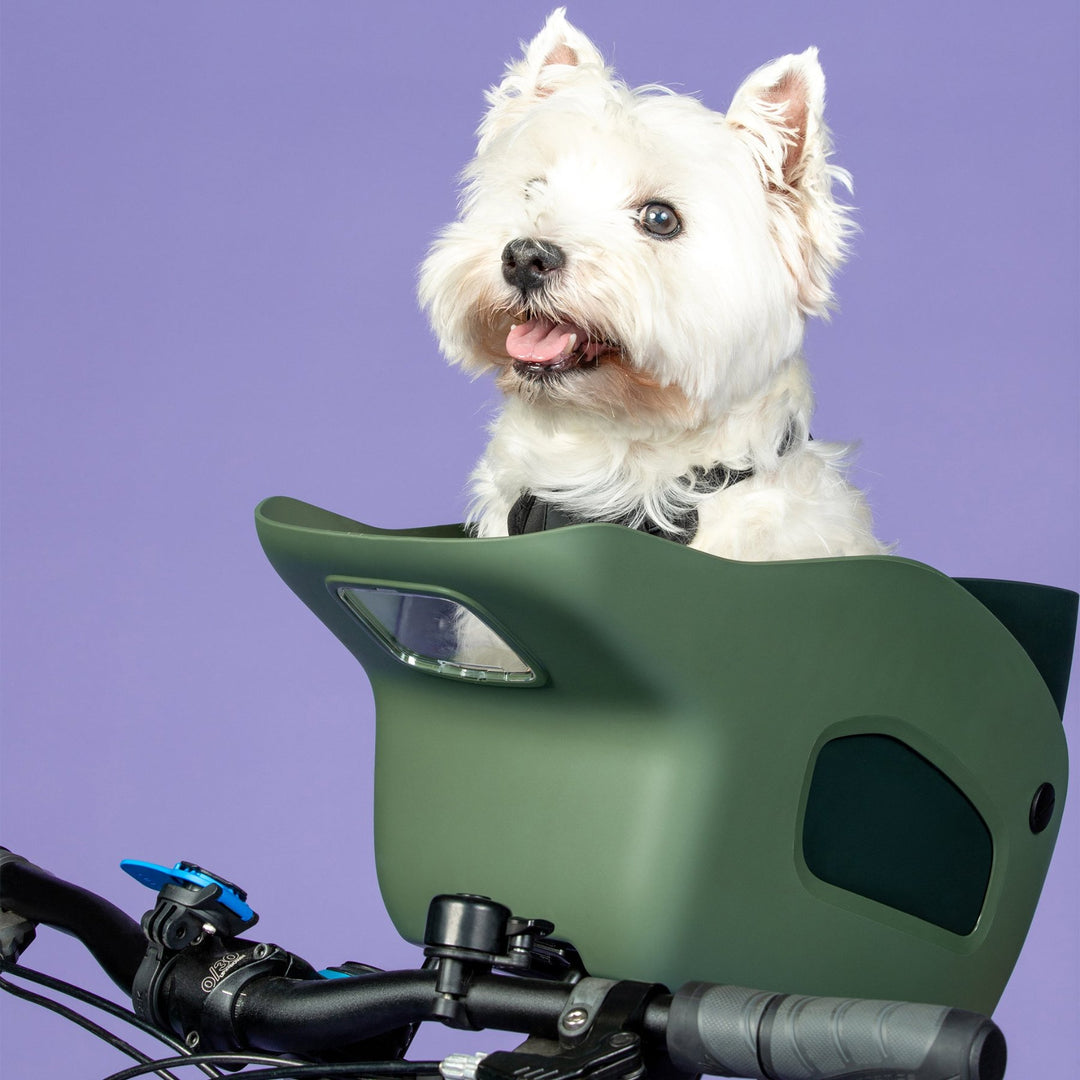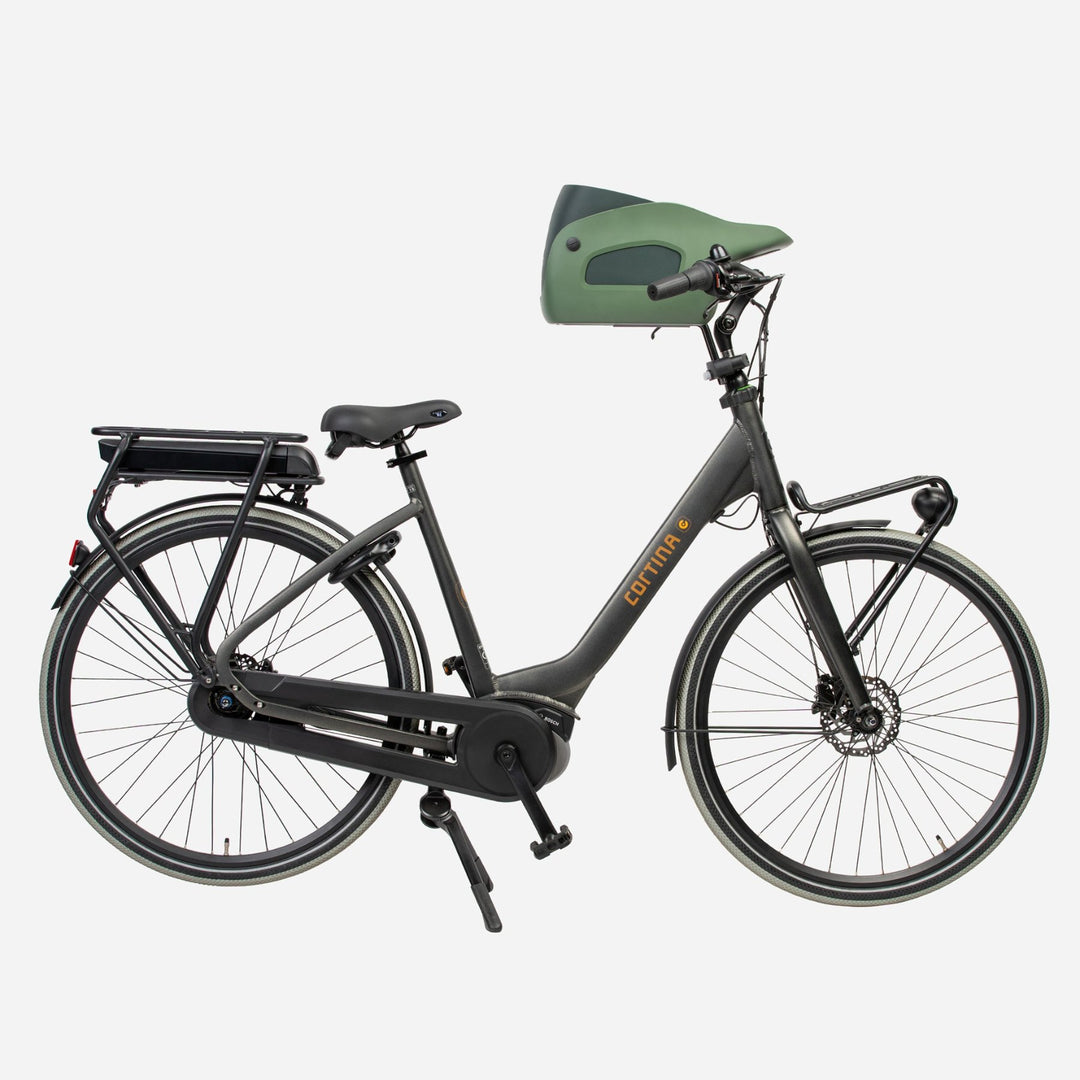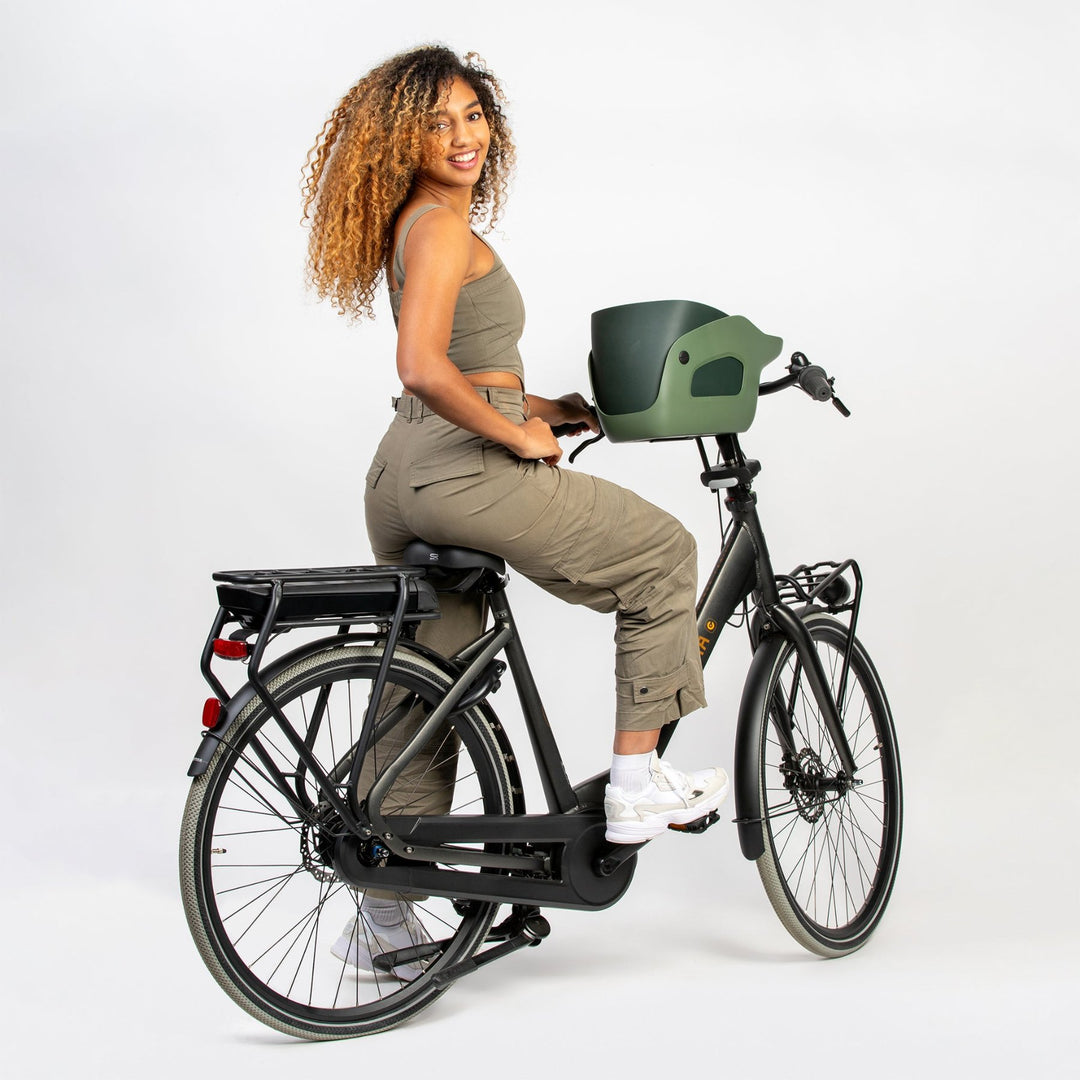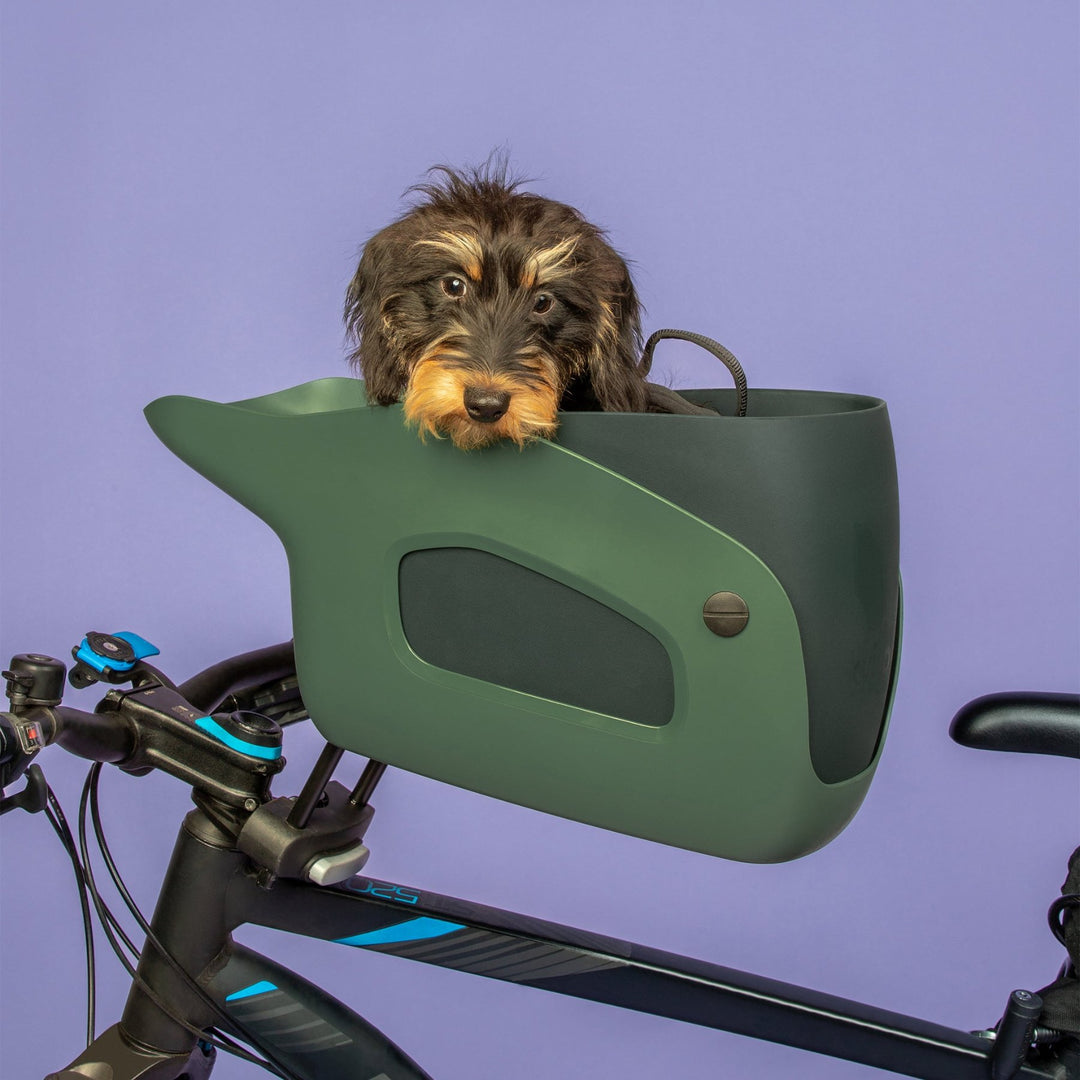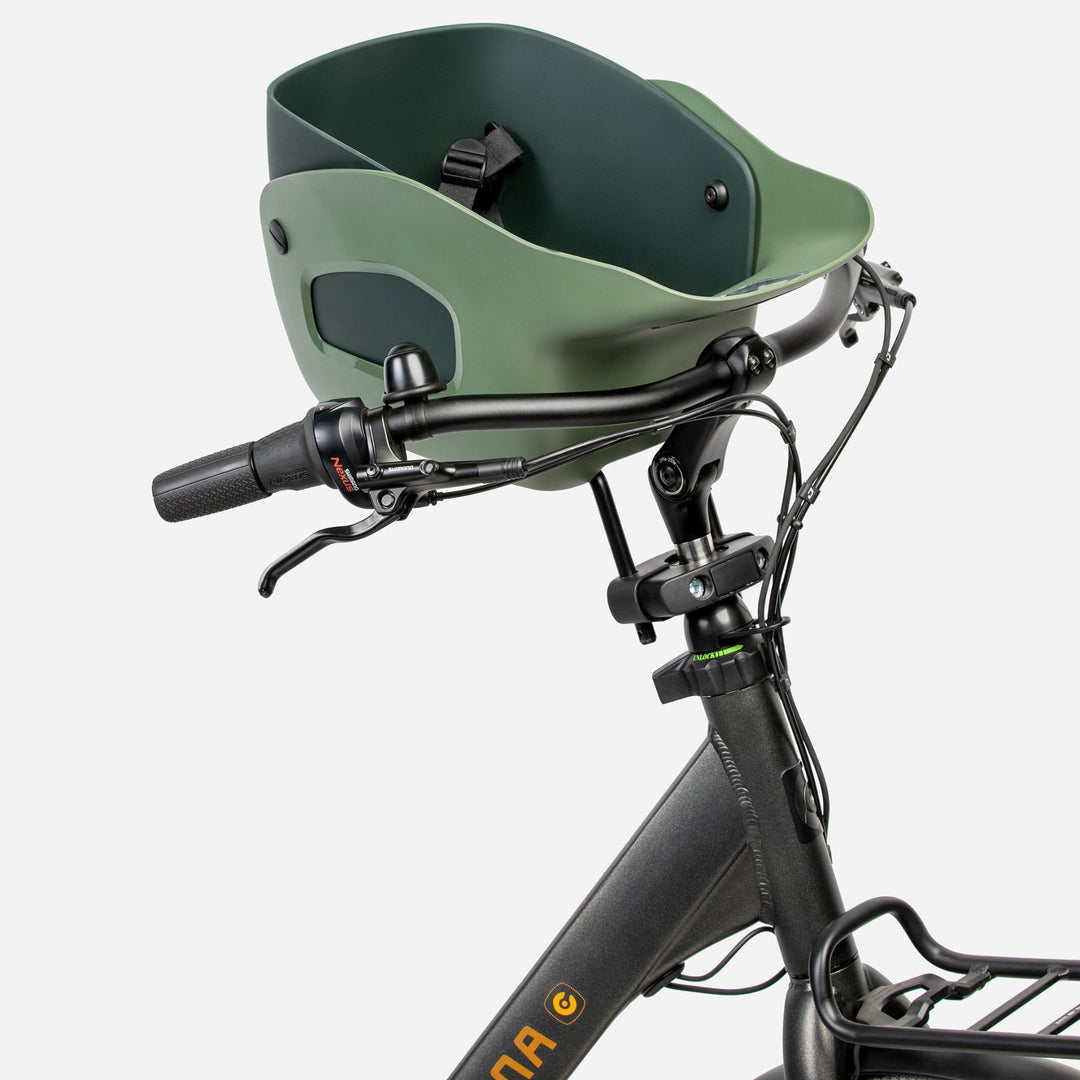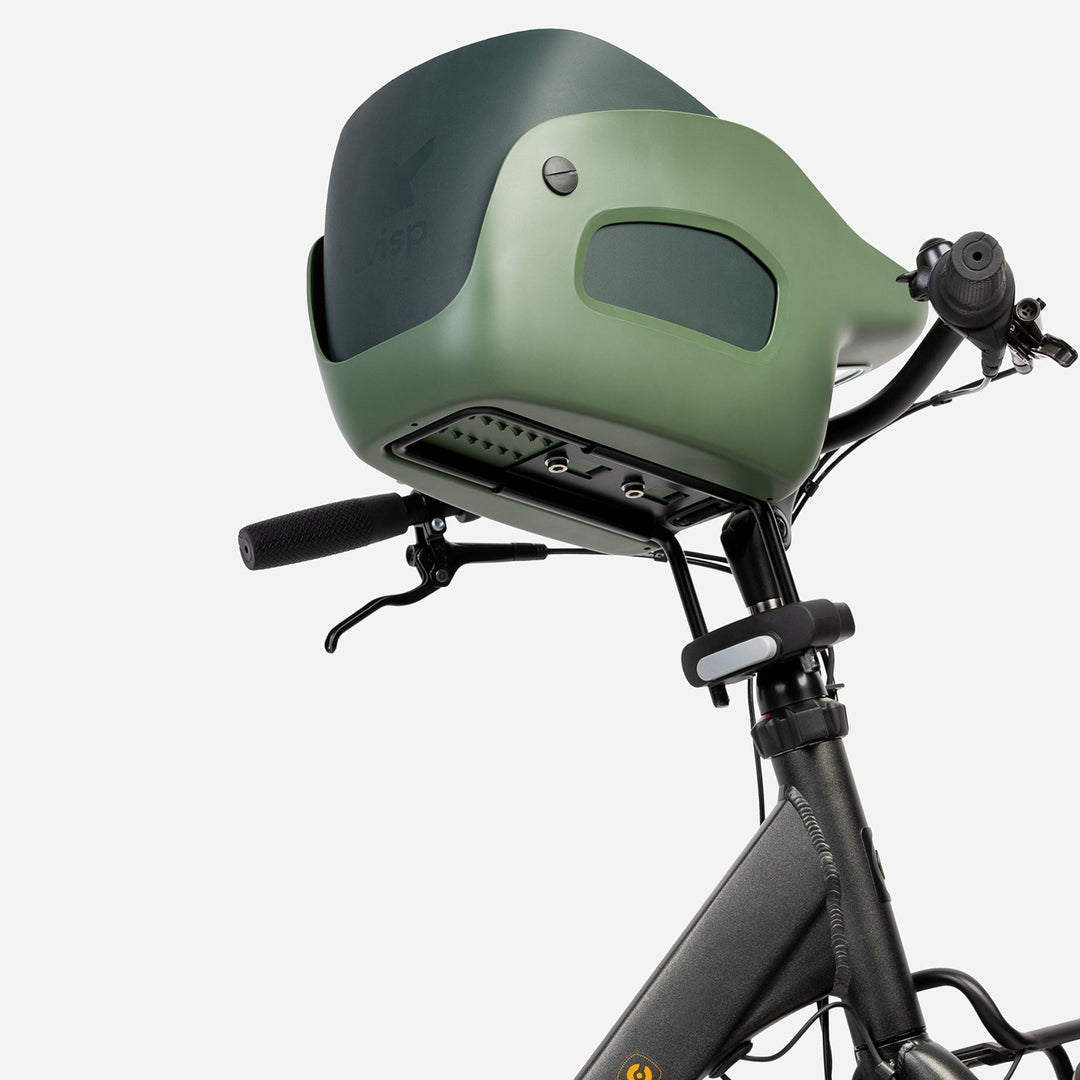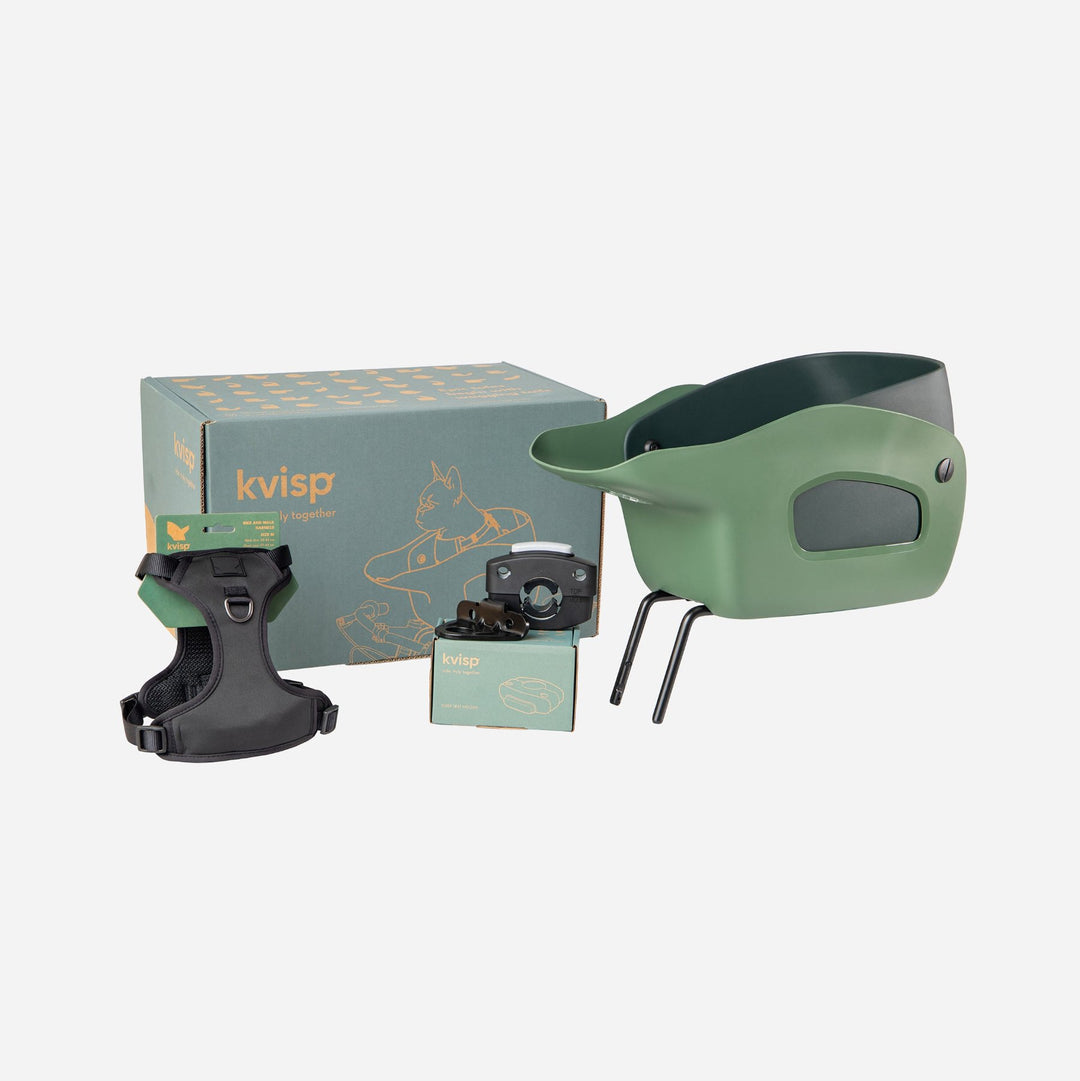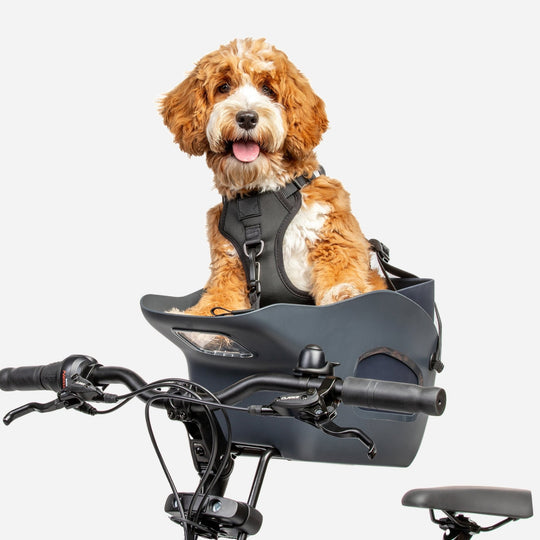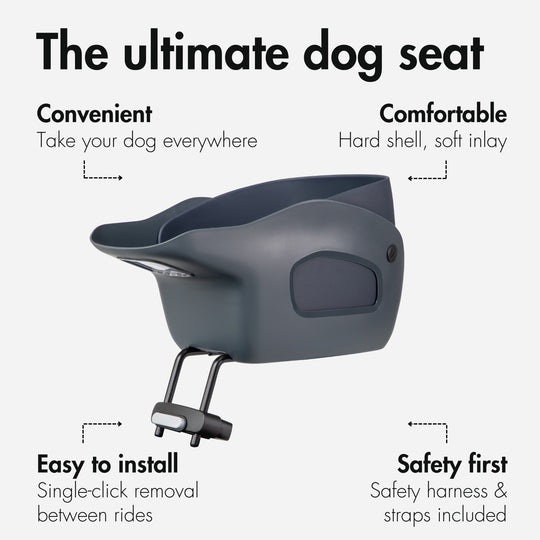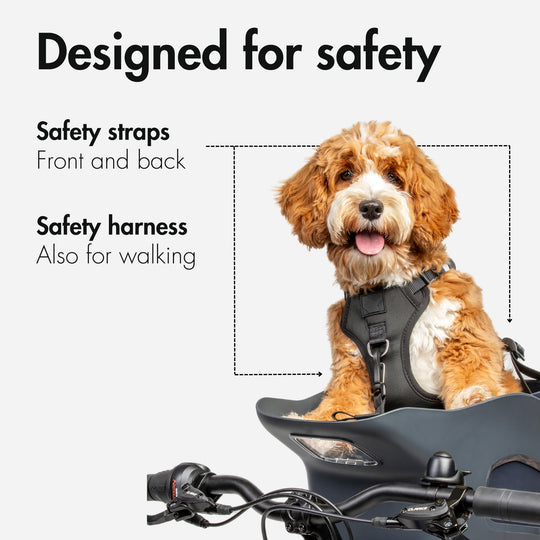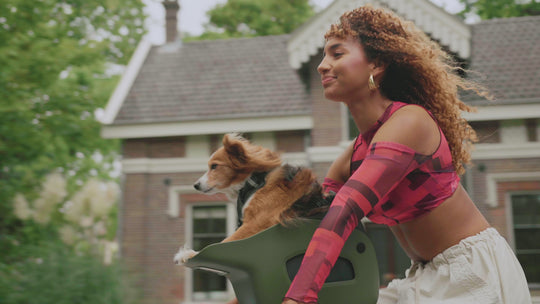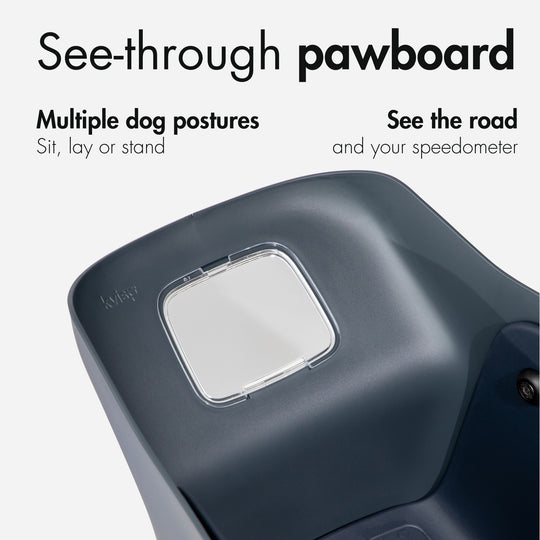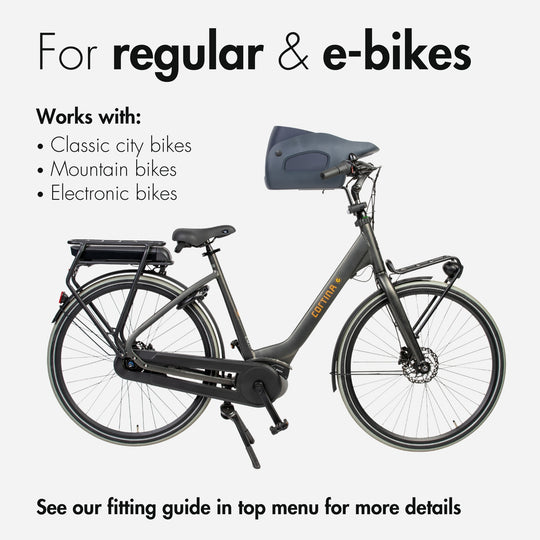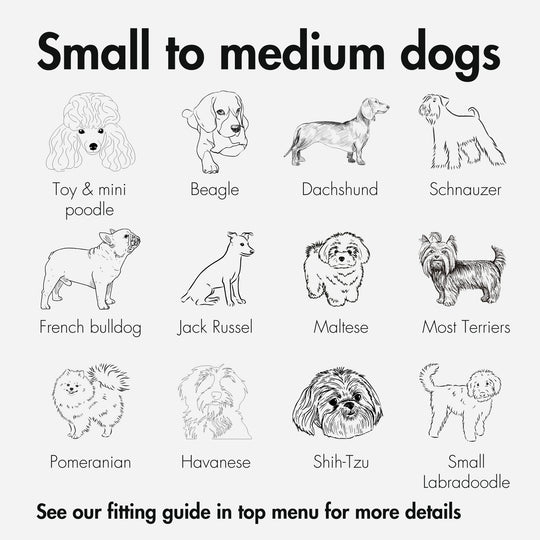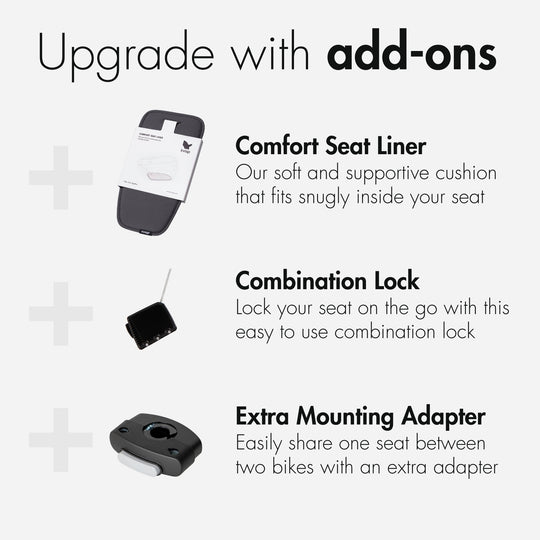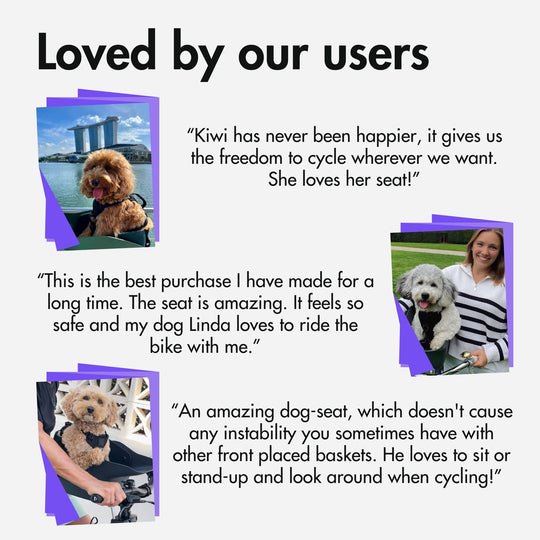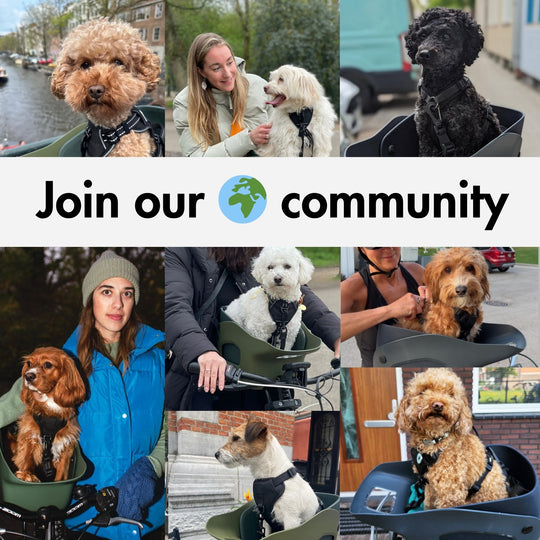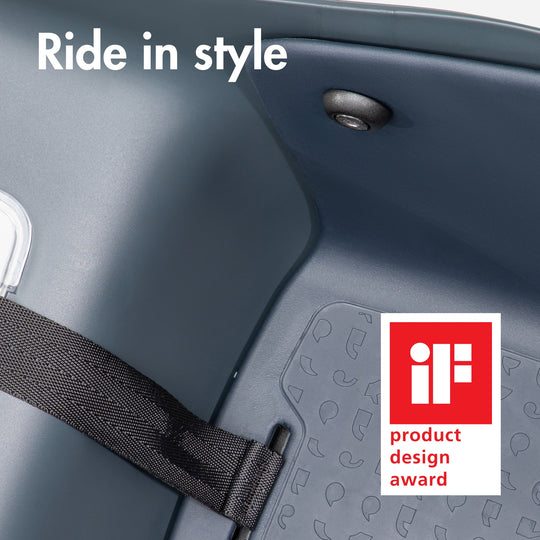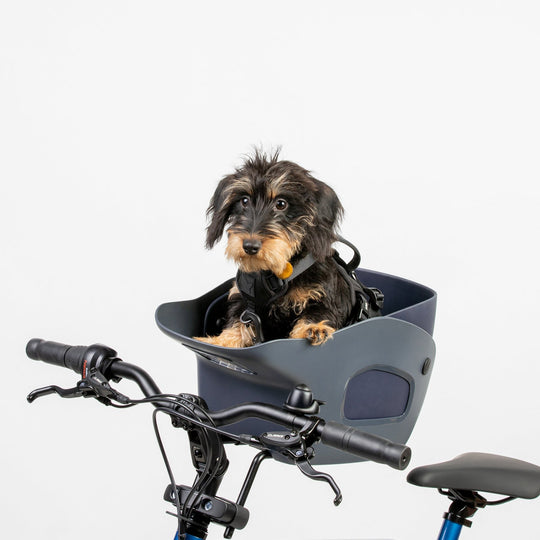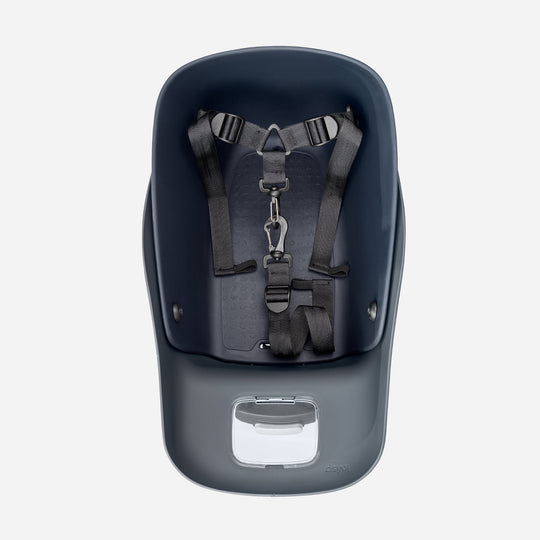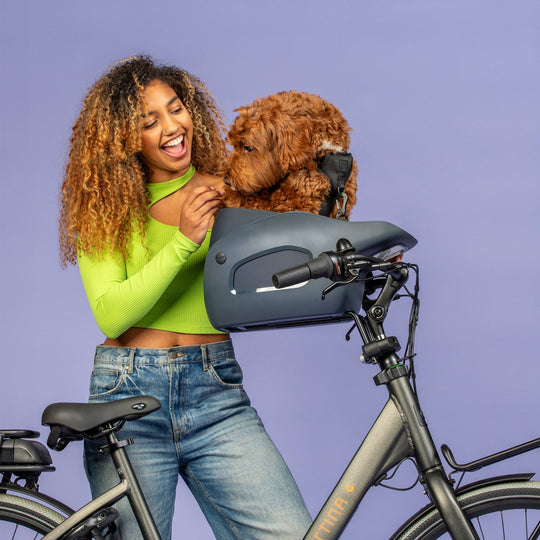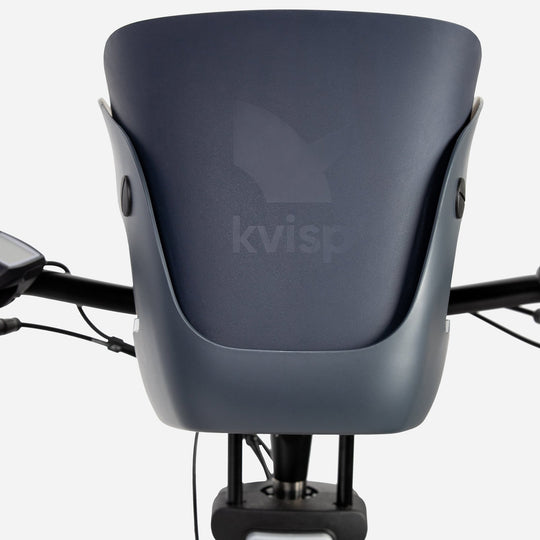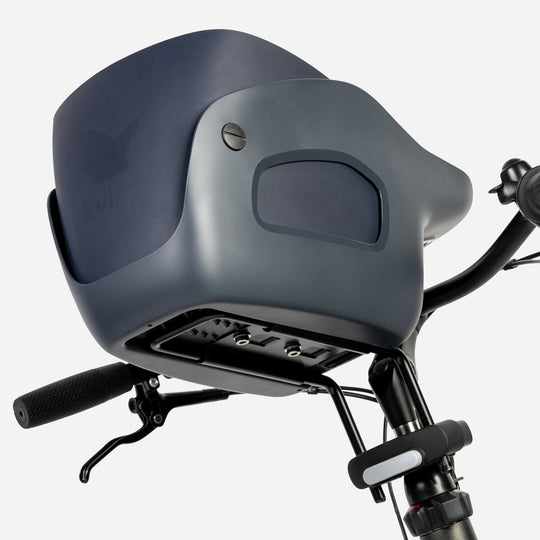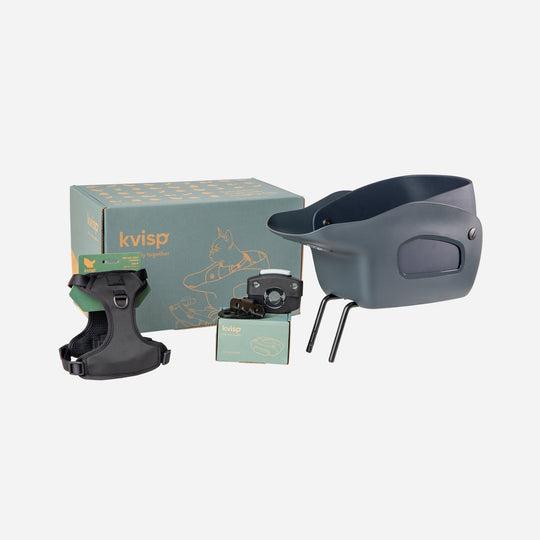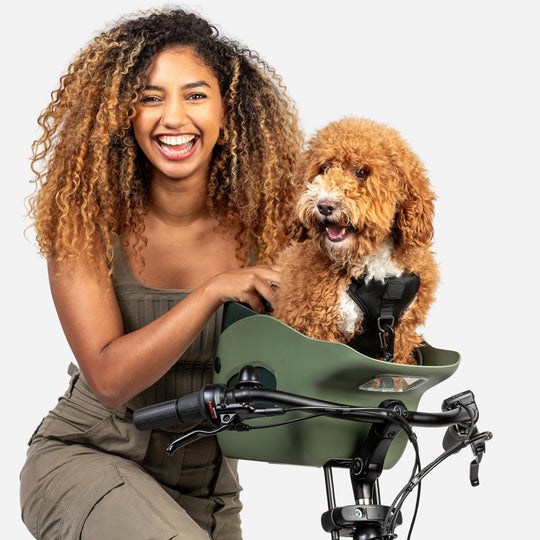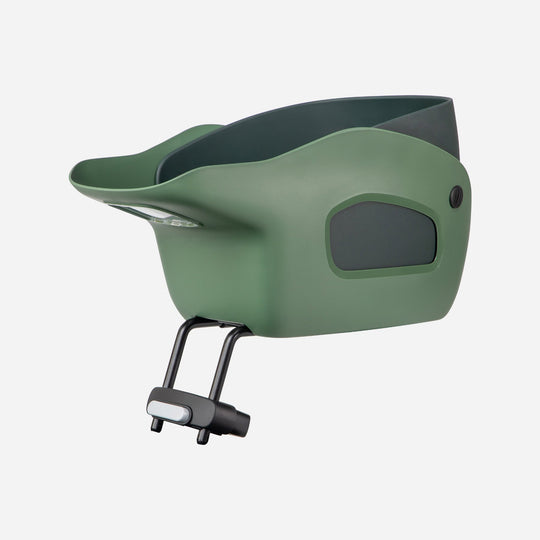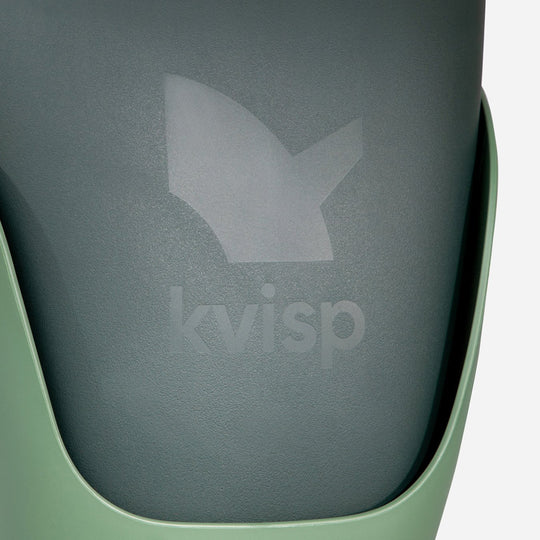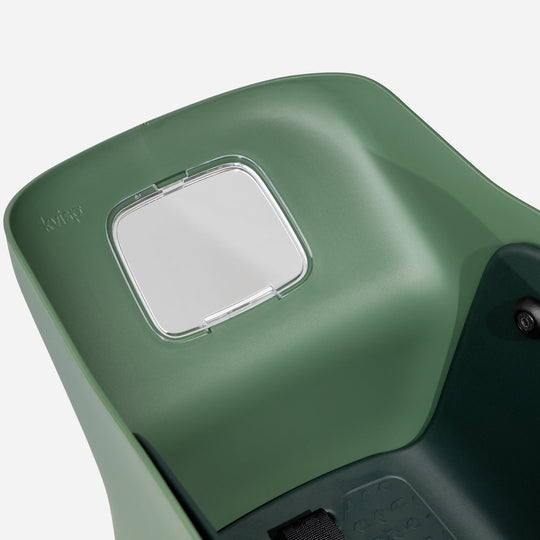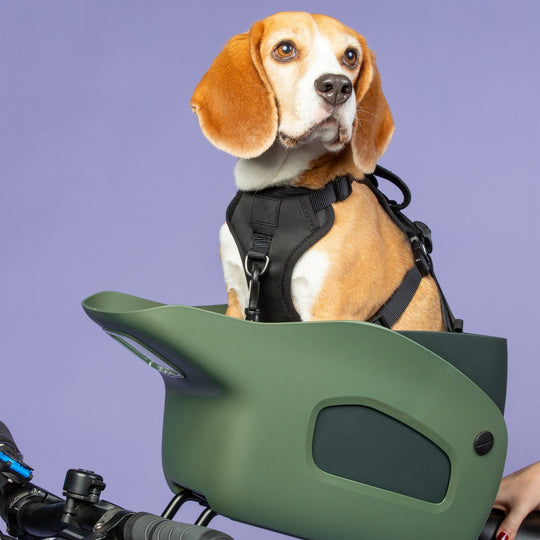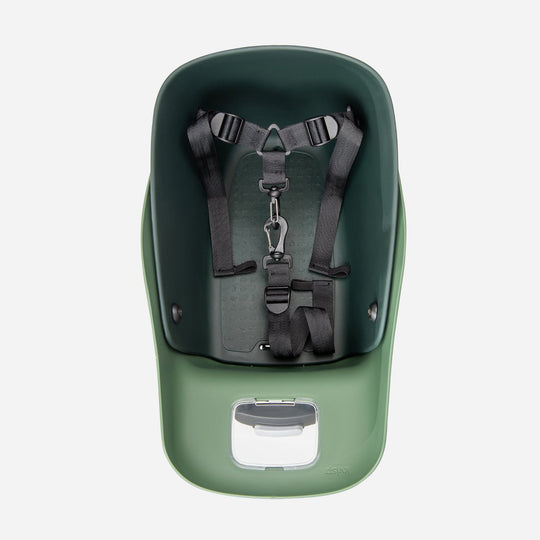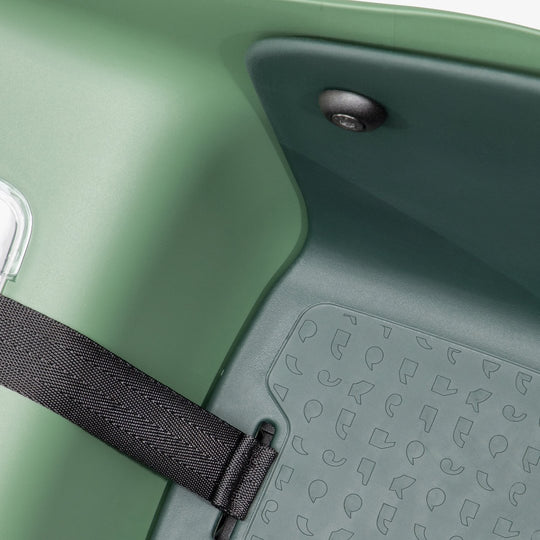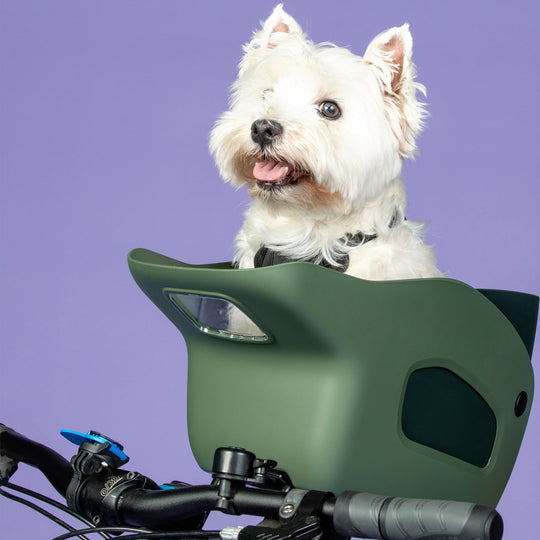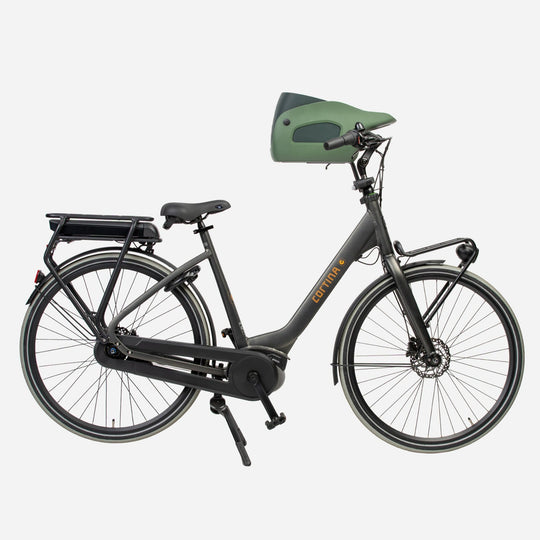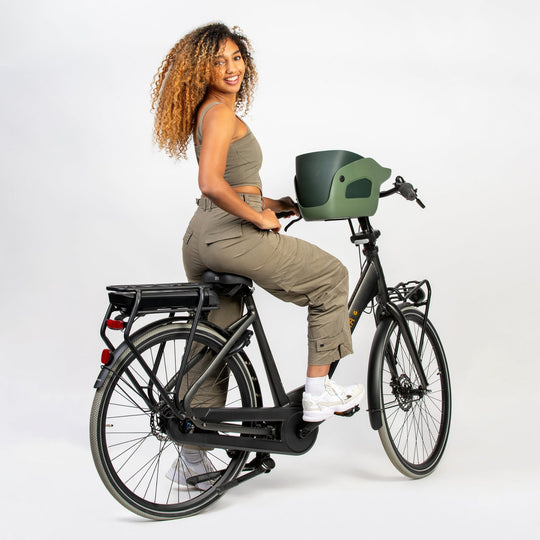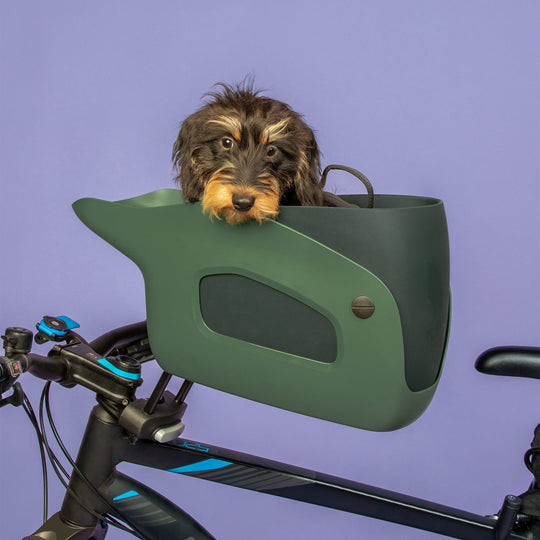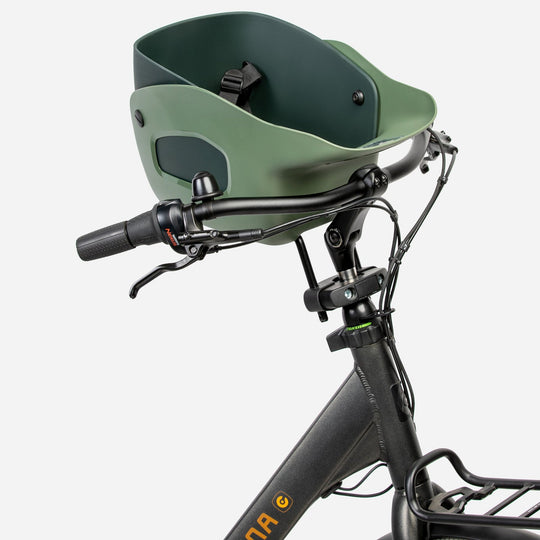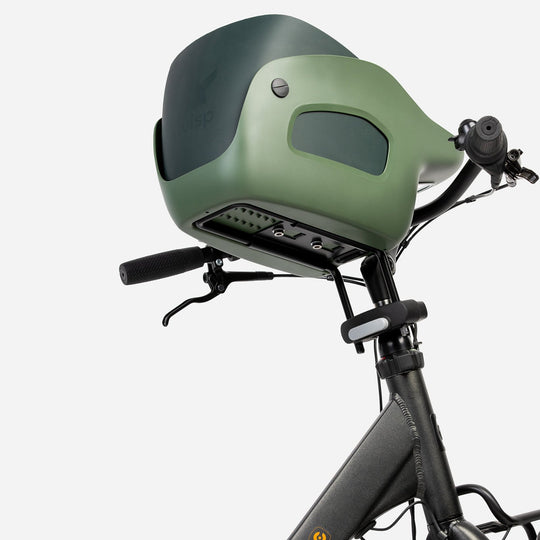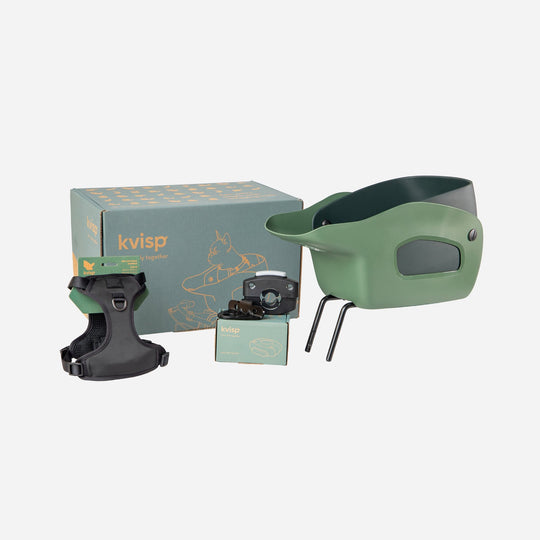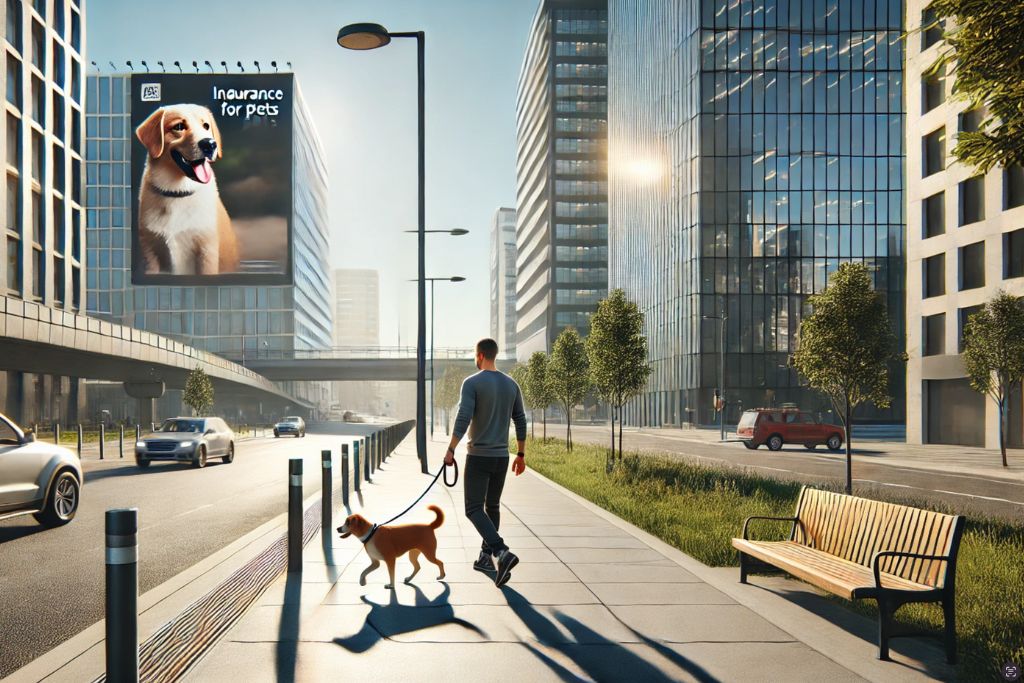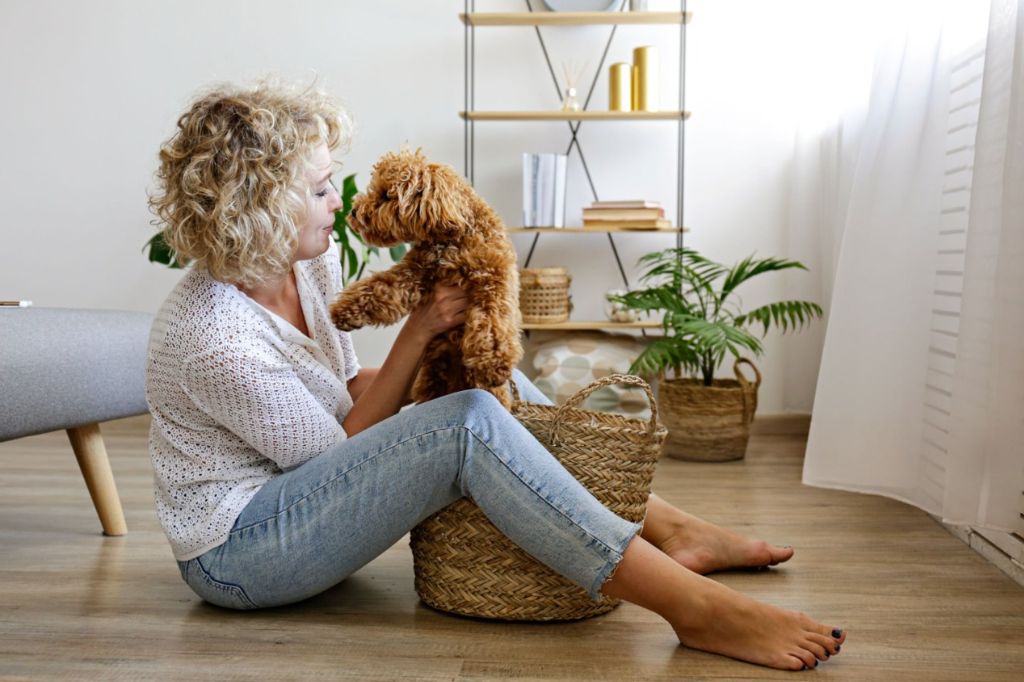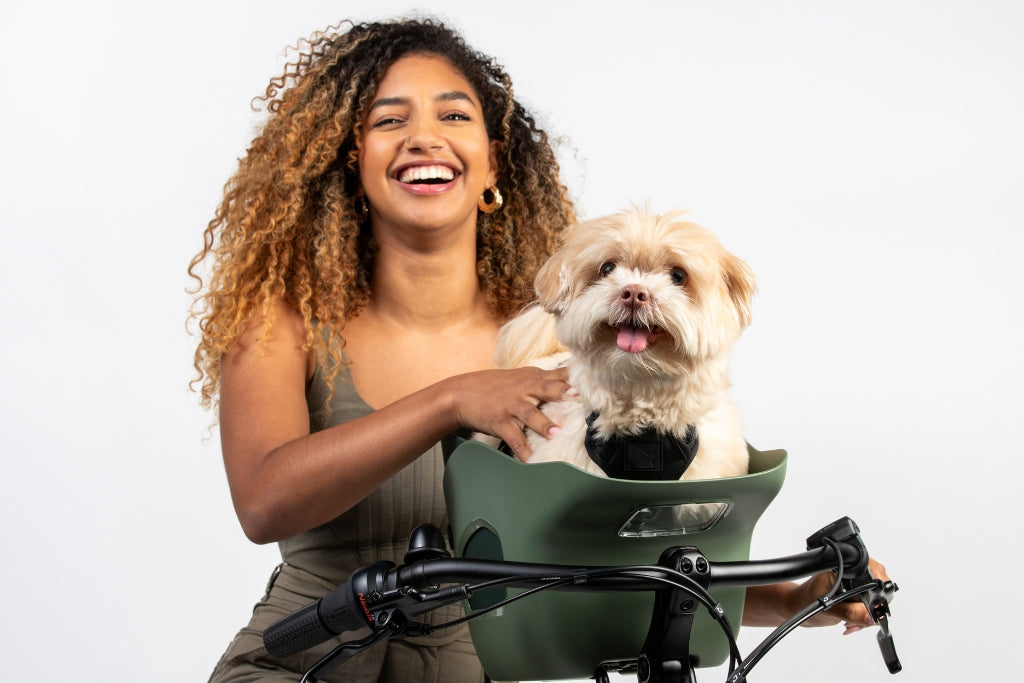Bike Safety Tips: How to Ride with a Dog in a Carrier
Taking your dog on a bike ride can be an incredible bonding experience, but it also comes with risks that every pet parent should be aware of. Unlike riding solo, biking with a dog means considering not just your own balance and safety but also your pup’s well-being. Even the most well-behaved dogs can get startled by sudden noises, unpredictable traffic, or other animals along the way. Without the proper setup and precautions, a leisurely ride can quickly turn into a stressful—or even dangerous—situation. That's why it's essential to take safety seriously from the start, ensuring both you and your furry co-pilot can enjoy the ride with peace of mind.
Another key reason to prioritize safety? Your dog is fully dependent on you for their protection. A dog in a carrier for a bike has no control over sudden stops, turns, or bumps on the road. If the carrier isn't properly secured or stable, even a small jolt can be unsettling for them. That’s why understanding the basics of safe riding—like picking the right carrier, maintaining steady speed, and choosing smooth paths—can make all the difference. A little preparation goes a long way in making every ride enjoyable instead of nerve-wracking!

Choosing the Right Dog Carrier for Your Bike
Not all dog bike carriers are the same, and choosing the wrong one can be a recipe for disaster. The right carrier should provide a secure and stable spot for your dog to sit comfortably, with enough space for them to move slightly without feeling cramped. There are two main types to consider: front-mounted carriers, which let your pup sit right in front of you, and rear-mounted carriers, which attach to the back of your bike. Front carriers work well for smaller dogs, giving them a great view of the ride while allowing you to keep an eye on them. Rear-mounted carriers are better suited for medium-sized dogs and can offer a more balanced riding experience.
When picking a dog carrier for bike, here’s what to look for:
-
Stability & Safety Features: A secure mounting system to prevent wobbling or tipping.
-
Ventilation: Breathable mesh sides or open-top designs for airflow.
-
Padded Interiors: Comfortable cushioning for long rides.
-
Weight Capacity: Ensure the carrier supports your dog’s weight safely.
-
Security Harness or Straps: Keeps your dog safely inside without restricting their movement too much.
It’s tempting to grab any pet carrier that "fits," but investing in a high-quality one ensures a smooth, safe ride for both of you. Choosing the right one can be the difference between a fun adventure and a ride full of stress!
Getting Your Dog Comfortable with the Carrier
Your dog won’t automatically love their new bike carrier from day one—some pups take time to adjust. Instead of rushing into a long ride, start with baby steps. First, let your dog explore the carrier at home, placing treats or their favorite toy inside. Let them sniff around, step in and out freely, and build positive associations with it. Once they seem comfortable, secure them inside for short periods while rewarding calm behavior. Over a few days, gradually introduce gentle movements, like lifting the carrier or walking the bike while they sit inside.
Once your dog seems relaxed, take short test rides in a quiet, controlled environment before hitting busier paths. Start with a slow ride around the block, stopping frequently to check their comfort level. Signs they’re enjoying the ride include relaxed posture, ears in a neutral position, and a calm demeanor. On the other hand, if they whine, shift around too much, or seem nervous, they may need more time to adjust. Patience is key—forcing a ride before they’re ready can create long-term anxiety around the experience.
Essential Safety Gear for You and Your Dog
Before hitting the road, it’s crucial to gear up properly—not just for you, but for your pup too! Safety equipment helps reduce risks and ensures that even if something unexpected happens, you’re both protected. A sturdy helmet is a must-have for every cyclist, and for nighttime or low-visibility rides, reflective clothing and bright bike lights are essential. But what about your dog?
Consider these must-haves for your furry co-pilot:
-
A secure harness – Collars can slip off, so a well-fitted harness is a safer choice.
-
A leash attachment system – Keeps your dog safely tethered inside the carrier.
-
Protective dog goggles – Shields their eyes from wind, debris, and UV rays.
-
A cooling pad or blanket – Helps with temperature regulation on hot or cold days.
-
Reflective gear – A small reflective vest or LED clip-on light increases visibility.
You wouldn't ride without the right gear, and your dog shouldn't either! Outfitting them with proper safety equipment ensures a smoother, safer journey for both of you.
Adjusting Your Riding Style for a Safer Journey
Biking with a dog requires an entirely different approach than riding solo. Your movements affect your pup more than you might realize—every sudden stop, sharp turn, or bumpy surface can startle them or throw off their balance. Smooth and steady is the name of the game. Keep a moderate speed and ease into stops rather than braking suddenly. If you need to turn, lean gently and avoid sharp, sudden movements that could make your dog uneasy.
Also, be mindful of external distractions. A squirrel darting across the path or a barking dog nearby could excite your pup, causing them to squirm or shift their weight suddenly. Maintaining a firm grip on your handlebars and staying alert to surroundings will help you anticipate these moments and adjust accordingly. Over time, you’ll develop a rhythm where both you and your dog feel completely in sync, making each ride smoother and more enjoyable.
The Best Routes for Biking with Your Dog
Not all bike paths are ideal for riding with a dog carrier for a bike. While city streets might seem convenient, they often come with unpredictable traffic, loud noises, and rough pavement—none of which make for a comfortable experience. Instead, look for dog-friendly biking trails that offer smoother, quieter paths with plenty of open space.
Here are some great places to ride with your pup:
-
Paved park trails – Smooth surfaces make for a gentler ride.
-
Dedicated bike paths – Less traffic means fewer distractions.
-
Lakeside or riverside routes – Scenic views and cool breezes!
-
Suburban greenways – Wide, tree-lined paths perfect for a peaceful ride.
-
Nature reserves – Some allow biking with dogs, offering fresh air and a bit of adventure.
Before setting out, check local regulations to ensure dogs are allowed on the path. Some trails have leash laws or restrictions on pets in certain areas. Planning ahead will save you frustration and make for a stress-free adventure.
Hydration and Rest Breaks: Keeping Your Dog Comfortable
Just like humans, dogs need frequent hydration and breaks when out on an adventure. Unlike us, they can't sweat to cool down, which means they can overheat quickly if they don't get enough water. Always carry a portable water bowl and take regular stops to let your pup drink. Even if they don’t seem thirsty, offer water every 20-30 minutes, especially on warm days.
Beyond hydration, make sure to factor in rest breaks during your ride. If you're going on a long trip, stopping every 30-45 minutes gives your dog a chance to stretch, relieve themselves, and reset. Look for shady spots or grassy areas where they can relax before continuing. A restless or overheated pup can become anxious or fidgety in a bike carrier, so paying attention to their body language—panting, drooping ears, or excessive shifting—can help you know when it’s time for a break.
How to Handle Emergencies on the Road
No matter how well-prepared you are, unexpected situations can arise while biking with your dog. From a loose carrier strap to a sudden shift in your dog’s mood, knowing how to stay calm and act quickly can make all the difference. One of the most important things to carry is a basic first-aid kit, including:
-
Gauze and antiseptic wipes – For minor scrapes or cuts.
-
Tweezers – Useful for removing small debris like thorns or splinters.
-
Cooling packs – Helps if your dog shows signs of overheating.
-
Emergency vet contact info – Always have a nearby clinic's details saved.
If your dog suddenly becomes restless, stop immediately and assess the situation. They may be uncomfortable, too hot, or startled by something. Avoid forcing them to continue if they seem distressed—sometimes, it’s better to cut a ride short than risk an unsafe trip home. Learning how to recognize early signs of stress or discomfort can prevent a minor issue from escalating into a real emergency.
Why a High-Quality Carrier Makes a Difference
Not all carriers provide the same level of comfort and security for your pup. A poorly designed carrier can shift unexpectedly, causing an unstable and nerve-wracking experience for your dog. That’s why investing in a well-balanced, ergonomic carrier for bike can make the difference between a smooth, enjoyable ride and a stressful one.
A high-quality dog carrier offers:
-
Stability – No wobbling or tipping, even when stopping or turning.
-
Secure harness attachments – Keeps your dog in place without restricting movement.
-
Padded interiors – Prevents discomfort, especially on longer rides.
-
Breathable design – Ensures proper airflow to keep your pup cool.
One option worth considering is the Kvisp Dog Carrier for Bikes—designed with both rider and dog safety in mind. Its sturdy, comfortable structure helps minimize movement, making it a must-have for pet parents who love cycling. A stable and secure ride isn’t just about convenience—it’s about ensuring your dog enjoys the adventure as much as you do.

Training Your Dog to Follow Bike Etiquette
A well-behaved dog makes every ride smoother and safer! While it might seem like your pup just needs to sit in the carrier and relax, some training is still necessary to keep them calm and cooperative throughout the ride. Teaching bike etiquette early will help prevent unnecessary distractions or sudden movements that could throw off your balance.
Some essential training tips include:
-
Teaching a "settle" command – Helps them stay calm inside the carrier.
-
Getting them used to riding noises – Play traffic sounds at home so they don’t startle easily.
-
Practicing with short rides first – Gradually increase ride duration as they adjust.
-
Reinforcing good behavior with treats – Reward calmness and stillness inside the carrier.
Some dogs naturally take to biking, while others need more reassurance. If your pup seems uneasy, don’t rush the process—consistency and positive reinforcement will get them there!
Seasonal Considerations for Biking with Your Dog
The time of year plays a huge role in how comfortable and safe your dog will be during a ride. What works in the spring might not be suitable in the middle of summer or winter. Paying attention to seasonal changes will help ensure every ride is as enjoyable as possible for your pup.
-
Hot Weather Rides
-
Avoid midday rides—mornings or evenings are cooler.
-
Bring a cooling pad or damp towel to keep your dog comfortable.
-
Watch for signs of heat exhaustion, like excessive panting or sluggishness.
-
Cold Weather Rides
-
Use an insulated carrier or dog jacket for warmth.
-
Protect paws with booties if riding on icy or salted roads.
-
Keep rides shorter to avoid exposure to cold winds.
Adapting to the seasons isn’t just about comfort—it’s about making sure your dog stays safe and happy year-round.
Making Every Ride an Enjoyable Experience
Biking with your dog isn’t just about getting from point A to B—it’s about sharing a special experience together. The key to making every ride memorable and fun is preparation, patience, and the right equipment. Whether it’s finding dog-friendly trails, ensuring a comfortable ride, or making time for frequent breaks, small details go a long way toward making biking a regular and stress-free activity for both of you.
Once your pup gets used to their bike carrier, you’ll start noticing their excitement every time you pull out the bike! Dogs thrive on routine, and soon, these rides will become something they look forward to just as much as you do. So, grab your gear, pick a scenic route, and enjoy the journey together—after all, there’s nothing better than the wind in your hair and a happy pup by your side.




